

How to Write a Good Conclusion Paragraph (+30 Examples)
A good conclusion paragraph is the lasting impression you want to leave with your reader.
Here is a quick summary of how to write a good conclusion paragraph:
Write a good conclusion paragraph by summarizing key points, restating your thesis, and providing a final thought or call to action. Ensure it wraps up your main ideas, reinforces your argument, and leaves the reader with something to ponder.
This ultimate guide will walk you through the steps to craft an effective conclusion, along with 30 examples to inspire you.
5 Steps for Writing a Good Conclusion Paragraph

Table of Contents
There are five main steps to writing a good conclusion.
Let’s go through each step
1. Understand the Purpose
The conclusion is your final opportunity to leave an impact.
It should tie together your main ideas, reinforce your message, and give the reader a sense of closure.
Wrap Up Your Main Ideas
The conclusion should succinctly wrap up the main points of your writing. Think of it as a summary that captures the essence of your arguments without going into detailed explanations.
This helps reinforce what you have discussed and ensures that the reader remembers the core message.
Reinforce Your Thesis
Your thesis statement is the foundation of your writing.
In the conclusion, restate it in a new way to reinforce your central argument. This reminds the reader of the purpose of your writing and underscores its significance.
Give a Sense of Closure
A good conclusion gives a sense of closure to the reader. It signals that the discussion has come to an end and that all points have been addressed. This helps the reader feel that the piece is complete and that their time was well-spent.
Leave the Reader with Something to Think About
The best conclusions go beyond merely summarizing the content.
They leave the reader with a final thought or reflection that stays with them. This could be a call to action, a prediction about the future, or a thought-provoking question that encourages further reflection on the topic.
2. Summarize Key Points
Briefly summarize the key points discussed in the body of your text.
Avoid introducing new information. This helps the reader recall the main ideas.
Brief Summary
The summary should be concise and to the point. Highlight the main ideas discussed in your writing without going into detailed explanations. This helps refresh the reader’s memory of your key points.
Avoid New Information
Introducing new information in the conclusion can confuse the reader. The conclusion is not the place to present new arguments or data. Stick to summarizing what has already been discussed.
Recall Main Ideas
Summarizing the key points helps the reader recall the main ideas of your writing. This reinforces the message and ensures that the reader takes away the most important information from your piece.
“In conclusion, adopting sustainable practices, reducing waste, and promoting renewable energy are essential steps towards a greener future.”
3. Restate the Thesis
Restate your thesis in a new way. This reinforces your argument without sounding repetitive.
Restate, Don’t Repeat
Restating the thesis means expressing it in a new way.
Avoid repeating it verbatim.
Instead, rephrase it to reinforce your argument and show that you have successfully argued your point throughout the piece.
Reinforce the Argument
Restating the thesis helps reinforce your central argument. It reminds the reader of the purpose of your writing and underscores its significance.
Provide Closure Restating the thesis in the conclusion gives a sense of closure.
It signals that the discussion has come full circle and that you have addressed your initial argument.
“By implementing these strategies, we can significantly reduce our carbon footprint and protect our planet for future generations.”
4. Provide a Final Thought
Offer a final thought or reflection to leave a lasting impression. This could be a call to action, a prediction, or a thought-provoking question.
Final Thought or Reflection
A final thought or reflection can leave a lasting impression on the reader.
It shows that you are not just summarizing your points but also offering a deeper insight or perspective.
Call to Action
A call to action encourages the reader to take the next step.
It motivates them to act based on the information or arguments presented in your writing.
Prediction or Question
A prediction about the future or a thought-provoking question can engage the reader and encourage further reflection. This leaves the reader with something to think about even after they have finished reading.
“As we move forward, it’s crucial to remember that every small effort counts. Together, we can make a difference.”
5. Use a Call to Action (if applicable)
If your piece is meant to persuade or encourage action, include a call to action. This motivates the reader to take the next step.
Motivate the Reader
A call to action motivates the reader to take the next step.
It encourages them to act based on the information or arguments presented in your writing.
Encourage Action
Including a call to action is especially important in persuasive writing. It encourages the reader to act on the information provided and make a change or take a specific action.
Provide Clear Steps
A good call to action provides clear steps for the reader to follow.
It should be specific and actionable, guiding the reader on what to do next.
“Join us in making a positive change. Start today by reducing your plastic use and spreading awareness about environmental conservation.”
Check out this video about how to write a good conclusion:
How to Write a Good Conclusion for an Essay
Writing a good conclusion for an essay involves summarizing your main points, restating your thesis, and providing a final thought or reflection.
Here’s how:
- Summarize Main Points : Briefly recap the key points discussed in the body of your essay.
- Restate Thesis : Paraphrase your thesis statement to reinforce your argument.
- Final Thought : Offer a final insight, question, or call to action to leave a lasting impression.
This approach ensures your essay feels complete and leaves the reader with a clear understanding of your argument.
How to Write a Good Conclusion for an Argumentative Essay
A strong conclusion for an argumentative essay should not only summarize the main points and restate the thesis but also emphasize the importance of your argument.
Follow these steps:
- Summarize Arguments : Briefly outline the main arguments presented.
- Restate Thesis : Rephrase your thesis to highlight its significance.
- Address Counterarguments : Acknowledge opposing viewpoints and reinforce why your argument is stronger.
- Call to Action : Encourage the reader to take action or reconsider their position.
How to Write a Good Conclusion for a Research Paper
Crafting a good conclusion for a research paper involves summarizing your findings, discussing their implications, and suggesting future research.
Here’s a guide:
- Summarize Findings : Recap the key results of your research.
- Discuss Implications : Explain the significance of your findings and how they contribute to the field.
- Restate Research Question : Reiterate the research question and how your findings address it.
- Suggest Future Research : Propose areas for further investigation.
This format provides a comprehensive and thoughtful conclusion that underscores the importance of your research and its potential impact.
30 Examples of Good Conclusion Paragraphs
Let’s explore some good examples of good conclusions.
Example 1: Environmental Essay
“In conclusion, the preservation of our natural resources is not just a necessity but a responsibility we owe to future generations. By taking small steps today, we can ensure a healthier planet tomorrow.”
Example 2: Technology Article
“As we embrace the advancements in technology, it is vital to remain vigilant about privacy and security. Staying informed and proactive can help us navigate the digital landscape safely.”
Example 3: Health and Wellness Blog
“Ultimately, achieving a balanced lifestyle requires dedication and mindfulness. By prioritizing our well-being, we can lead healthier and more fulfilling lives.”
Example 4: Business Report
“In summary, the market analysis indicates a positive trend for our product. With strategic planning and execution, we can capitalize on these opportunities and drive growth.”
Example 5: Education Essay
“In the end, fostering a love for learning in students is the key to their success. By creating engaging and supportive educational environments, we can inspire the next generation of leaders.”
Example 6: Travel Blog
“To conclude, exploring new destinations enriches our lives and broadens our perspectives. Embrace the adventure and discover the beauty of our world.”
Example 7: Personal Development Article
“In the final analysis, personal growth is a lifelong journey. Embrace challenges, learn from experiences, and continue striving to become the best version of yourself.”
Example 8: Marketing Case Study
“In closing, the data clearly shows that targeted marketing strategies significantly improve customer engagement and sales. By refining our approach, we can achieve even greater success.”
Example 9: Historical Analysis
“In conclusion, the events of the past continue to shape our present and future. Understanding history is essential to making informed decisions and avoiding past mistakes.”
Example 10: Scientific Research Paper
“Ultimately, the findings of this study contribute to our understanding of the subject and open the door for further research. Continued exploration in this field is vital for advancing knowledge.”
Example 11: Political Commentary
“In the end, civic engagement is crucial for a functioning democracy. Stay informed, participate in discussions, and exercise your right to vote.”
Example 12: Fashion Blog
“To wrap up, fashion is a powerful form of self-expression. Embrace your unique style and let your wardrobe reflect your personality.”
Example 13: Food Blog
“In conclusion, cooking at home not only saves money but also allows you to experiment with flavors and ingredients. Start your culinary journey today and discover the joys of homemade meals.”
Example 14: Sports Article
“Ultimately, teamwork and perseverance are the foundations of success in sports. Keep pushing your limits and strive for excellence on and off the field.”
Example 15: Literature Analysis
“In summary, the themes explored in this novel resonate with readers and offer valuable insights into the human condition. Its timeless message continues to inspire and provoke thought.”
Example 16: Parenting Blog
“In the end, raising children requires patience, love, and commitment. Cherish the moments, and remember that every effort you make shapes their future.”
Example 17: Finance Article
“To conclude, financial planning is essential for securing your future. Start today by setting clear goals and creating a budget that aligns with your aspirations.”
Example 18: Career Advice Blog
“In conclusion, building a successful career takes time and dedication. Stay focused, seek opportunities for growth, and never stop learning.”
Example 19: Fitness Blog
“Ultimately, regular exercise and a balanced diet are key to maintaining a healthy lifestyle. Stay motivated, and remember that every step counts towards your fitness goals.”
Example 20: DIY Blog
“In summary, DIY projects are a rewarding way to personalize your space and learn new skills. Get creative and start your next project today.”
Example 21: Relationship Advice
“In the end, strong relationships are built on communication, trust, and mutual respect. Nurture your connections and strive for harmony in your interactions.”
Example 22: Pet Care Blog
“To wrap up, responsible pet ownership involves understanding your pet’s needs and providing them with a loving home. Invest in their well-being, and they’ll reward you with unconditional love.”
Example 23: Environmental Science Paper
“In conclusion, addressing climate change requires global cooperation and immediate action. Every effort counts, and together we can create a sustainable future.”
Example 24: Technology Review
“Ultimately, this gadget offers impressive features that enhance convenience and efficiency. Consider it for your next tech upgrade.”
Example 25: Psychology Article
“In summary, understanding human behavior is crucial for improving mental health and well-being. Continue exploring this fascinating field for more insights.”
Example 26: Gardening Blog
“In the end, gardening is a therapeutic and rewarding hobby that connects us with nature. Start your garden today and enjoy the benefits of fresh produce and beautiful blooms.”
Example 27: Home Improvement Article
“To conclude, home improvement projects can significantly enhance your living space and increase property value. Plan carefully and enjoy the transformation.”
Example 28: Social Media Marketing
“In conclusion, effective social media marketing requires consistency, creativity, and engagement. Develop a strategy that resonates with your audience and watch your brand grow.”
Example 29: Automotive Review
“Ultimately, this vehicle combines performance, style, and safety. Take it for a test drive and experience its capabilities firsthand.”
Example 30: Music Blog
“In summary, music has the power to evoke emotions and bring people together. Explore different genres and find the soundtrack to your life.”
Tips for Writing a Strong Conclusion
Here are some simple but good tips for writing a powerful conclusion:
- Keep it Concise – A good conclusion should be short and to the point. Avoid unnecessary details and focus on wrapping up your main ideas.
- Use Clear Language – Ensure your language is clear and easy to understand. Avoid jargon and complex sentences.
- Be Consistent – Maintain the same tone and style as the rest of your text. Consistency helps create a seamless reading experience.
- End on a Positive Note – Whenever possible, end with a positive or uplifting message. This leaves the reader with a good impression.
Common Mistakes to Avoid
There are some common mistakes that many writers make when crafting their conclusions.
- Introducing New Information – Don’t introduce new ideas or arguments in the conclusion. This can confuse the reader and dilute your main points.
- Being Vague – Avoid vague statements that don’t add value. Be specific and clear in your summary.
- Repetitiveness – Don’t repeat the same points over and over. Restate your thesis and key points in a new way.
- Ignoring the Thesis – Make sure to tie your conclusion back to your thesis. This reinforces your argument and gives a sense of closure.
Final Thoughts: How to Write a Good Conclusion Paragraph
Writing a good conclusion paragraph is essential for creating a cohesive and impactful piece of writing.
By summarizing key points, restating the thesis, providing a final thought, and using a call to action, you can craft a strong conclusion that leaves a lasting impression.
Use the 30 examples provided to inspire your own writing and ensure your conclusions are always effective and engaging.
Read This Next:
- How to Write an Introduction Paragraph [50+ Examples]
- How to Write a Paragraph [Ultimate Guide + Examples]
- Types of Evidence in Writing [Ultimate Guide + Examples]
- Narrative Writing Graphic Organizer [Guide + Free Templates]
- How to Write a Hook (40 Good Examples)
In a short paper—even a research paper—you don’t need to provide an exhaustive summary as part of your conclusion. But you do need to make some kind of transition between your final body paragraph and your concluding paragraph. This may come in the form of a few sentences of summary. Or it may come in the form of a sentence that brings your readers back to your thesis or main idea and reminds your readers where you began and how far you have traveled.
So, for example, in a paper about the relationship between ADHD and rejection sensitivity, Vanessa Roser begins by introducing readers to the fact that researchers have studied the relationship between the two conditions and then provides her explanation of that relationship. Here’s her thesis: “While socialization may indeed be an important factor in RS, I argue that individuals with ADHD may also possess a neurological predisposition to RS that is exacerbated by the differing executive and emotional regulation characteristic of ADHD.”
In her final paragraph, Roser reminds us of where she started by echoing her thesis: “This literature demonstrates that, as with many other conditions, ADHD and RS share a delicately intertwined pattern of neurological similarities that is rooted in the innate biology of an individual’s mind, a connection that cannot be explained in full by the behavioral mediation hypothesis.”
Highlight the “so what”
At the beginning of your paper, you explain to your readers what’s at stake—why they should care about the argument you’re making. In your conclusion, you can bring readers back to those stakes by reminding them why your argument is important in the first place. You can also draft a few sentences that put those stakes into a new or broader context.
In the conclusion to her paper about ADHD and RS, Roser echoes the stakes she established in her introduction—that research into connections between ADHD and RS has led to contradictory results, raising questions about the “behavioral mediation hypothesis.”
She writes, “as with many other conditions, ADHD and RS share a delicately intertwined pattern of neurological similarities that is rooted in the innate biology of an individual’s mind, a connection that cannot be explained in full by the behavioral mediation hypothesis.”
Leave your readers with the “now what”
After the “what” and the “so what,” you should leave your reader with some final thoughts. If you have written a strong introduction, your readers will know why you have been arguing what you have been arguing—and why they should care. And if you’ve made a good case for your thesis, then your readers should be in a position to see things in a new way, understand new questions, or be ready for something that they weren’t ready for before they read your paper.
In her conclusion, Roser offers two “now what” statements. First, she explains that it is important to recognize that the flawed behavioral mediation hypothesis “seems to place a degree of fault on the individual. It implies that individuals with ADHD must have elicited such frequent or intense rejection by virtue of their inadequate social skills, erasing the possibility that they may simply possess a natural sensitivity to emotion.” She then highlights the broader implications for treatment of people with ADHD, noting that recognizing the actual connection between rejection sensitivity and ADHD “has profound implications for understanding how individuals with ADHD might best be treated in educational settings, by counselors, family, peers, or even society as a whole.”
To find your own “now what” for your essay’s conclusion, try asking yourself these questions:
- What can my readers now understand, see in a new light, or grapple with that they would not have understood in the same way before reading my paper? Are we a step closer to understanding a larger phenomenon or to understanding why what was at stake is so important?
- What questions can I now raise that would not have made sense at the beginning of my paper? Questions for further research? Other ways that this topic could be approached?
- Are there other applications for my research? Could my questions be asked about different data in a different context? Could I use my methods to answer a different question?
- What action should be taken in light of this argument? What action do I predict will be taken or could lead to a solution?
- What larger context might my argument be a part of?
What to avoid in your conclusion
- a complete restatement of all that you have said in your paper.
- a substantial counterargument that you do not have space to refute; you should introduce counterarguments before your conclusion.
- an apology for what you have not said. If you need to explain the scope of your paper, you should do this sooner—but don’t apologize for what you have not discussed in your paper.
- fake transitions like “in conclusion” that are followed by sentences that aren’t actually conclusions. (“In conclusion, I have now demonstrated that my thesis is correct.”)
- picture_as_pdf Conclusions
Still have questions? Leave a comment
Add Comment
Checklist: Dissertation Proposal
Enter your email id to get the downloadable right in your inbox!
Examples: Edited Papers
Need editing and proofreading services, how to write a conclusion for an essay (examples included).

- Tags: Essay , Essay Writing
Condensing a 1,000-plus-word essay into a neat little bundle may seem like a Herculean task. You must summarize all your findings and justify their importance within a single paragraph.
But, when you discover the formula for writing a conclusion paragraph, things get much simpler!
But, how to write a conclusion paragraph for an essay, and more importantly, how to make it impactful enough? Through this article, we will walk you through the process of constructing a powerful conclusion that leaves a lingering impression on readers’ minds. We will also acquaint you with essay conclusion examples for different types of essays.
Score high with our expert essay editing services! Get started
Let’s start from the beginning: How can you write a conclusion for an essay?
How to write a conclusion for an essay
In order to write an effective conclusion, you must first understand what is a conclusion in an essay. It is not just the summary of the main points of your essay. A well-written conclusion effectively ties together the main ideas of your essay and also pays heed to their broader implications. The objectives of your concluding paragraph are as follows:
- Highlight the significance of your essay topic
- Tie together the key points of your essay
- Leave the reader with something to ponder about
A good essay conclusion begins with a modified thesis statement that is altered on the basis of the information stated throughout the essay. It then ties together all the main points of the essay and ends with a clincher that highlights the broader implications of your thesis statement.
Now that we’ve understood the basics of how to conclude an essay, let’s understand the key aspects of a good conclusion paragraph.
1. Restating your thesis statement
If you want to understand how to start a conclusion, you must realize that involves more than just restating the thesis statement word for word. Your thesis statement needs to be updated and expanded upon as per the information provided in your essay.
There are many ways to start a conclusion. One such method could be to start with the revised version of your thesis statement that hints to the significance of your argument. After this, your conclusion paragraph can organically move on to your arguments in the essay.
Let’s take a look at an effective way of writing a conclusion for an essay:
If the following claim is your thesis statement:
Virtual reality (VR) is undeniably altering the perception of reality by revolutionizing various industries, reshaping human experiences, and challenging traditional notions of what is real.
The restated thesis statement will be as follows:
Our analysis has substantiated the claim that virtual reality (VR) is significantly transforming the way we perceive reality. It has revolutionized industries, reshaped human experiences, and challenged traditional notions of reality.
2. Tying together the main points
Tying together all the main points of your essay does not mean simply summarizing them in an arbitrary manner. The key is to link each of your main essay points in a coherent structure. One point should follow the other in a logical format.
The goal is to establish how each of these points connects to the message of your essay as a whole. You can also take the help of powerful quotes or impactful reviews to shed a unique light on your essay.
Let’s take a look at an example:
VR presents a new paradigm where the distinction between the real and the virtual becomes increasingly blurred. As users dive into immersive virtual worlds, they are confronted with questions about the nature of reality, perception, and the boundaries of human consciousness.
3. Constructing an impactful conclusion
Most of us are confused about how to end an essay with a bang. The answer is quite simple! The final line of your essay should be impactful enough to create a lasting impression on the reader. More importantly, it should also highlight the significance of your essay topic. This could mean the broader implications of your topic, either in your field of study or in general.
Optionally, you could also try to end your essay on an optimistic note that motivates or encourages the reader. If your essay is about eradicating a problem in society, highlight the positive effects achieved by the eradication of that problem.
Here’s an example of how to end an essay:
In a world where virtual boundaries dissolve, VR is the catalyst that reshapes our perception of reality, forever altering the landscape of the human experience.
Here’s a combined version of all three aspects:
Our analysis has substantiated the claim that Virtual Reality (VR) is significantly transforming how we perceive reality. It has revolutionized industries, reshaped human experiences, and challenged traditional notions of reality. It presents a new paradigm where the distinction between the real and the virtual becomes increasingly blurred. As users dive into immersive virtual worlds, they are confronted with questions about the nature of reality, perception, and the boundaries of human consciousness. In a world where virtual boundaries dissolve, it is the catalyst that reshapes our perception of reality, forever altering the landscape of the human experience.
Now that we’ve understood the structure of a concluding paragraph, let’s look at what to avoid while writing a conclusion.
What to avoid in your conclusion paragraph
When learning how to write a conclusion for an essay, you must also know what to avoid. You want to strengthen your argument with the help of a compelling conclusion paragraph, and not undermine it by confusing the reader.
Let’s take a look at a few strategies to avoid in your essay conclusion:
1. Avoid including new evidence
The conclusion should not introduce new information but rather strengthen the arguments that are already made. If you come across any unique piece of information regarding your essay topic, accommodate it into your body paragraphs rather than stuffing it into your conclusion.
Including new, contradictory information in the concluding paragraph not only confuses the reader but also weakens your argument. You may include a powerful quote that strengthens the message of your essay, or an example that sheds light on the importance of your argument. However, this does not include introducing a completely new argument or making a unique point.
2. Avoid the use of concluding phrases
Your conclusion should hint towards your essay coming to an end, instead of blatantly stating the obvious. Blatant concluding statements undermine the quality of your essay, making it clumsy and amateurish. They also significantly diminish the quality of your arguments.
It is a good idea to avoid the following statements while concluding your essay:
- In conclusion,
- In summary,
While using these statements may not be incorrect per se, hinting towards a conclusion creates a better impression on the reader rather than blatantly stating it.
Here are more effective statements you could use:
- Let this essay serve as a catalyst for…
- As we navigate the intricacies of this multifaceted topic, remember…
- As I bid farewell to this subject…
3. Don’t undermine your argument
Although there might be several points of view regarding your essay topic, it is crucial that you stick to your own. You may have stated and refuted other points of view in your body paragraphs.
However, your conclusion is simply meant to strengthen your main argument. Mentioning other points of view in your essay conclusion, not only weakens your argument but also creates a poor impression of your essay.
Here are a few phrases you should avoid in your essay conclusion:
- There are several methods to approach this topic.
- There are plenty of good points for both sides of the argument.
- There is no clear solution to this problem.
Examples of essay conclusions
Different types of essays make use of different forms of conclusions. The critical question of “how to start a conclusion paragraph” has many different answers. To help you further, we’ve provided a few good conclusions for essays that are based on the four main essay types.
1. Narrative essay conclusion
The following essay conclusion example elaborates on the narrator’s unique experience with homeschooling.
- Restated thesis statement
- Body paragraph summary
- Closing statement
My experience with homeschooling has been a journey that has shaped me in profound ways. Through the challenges and triumphs, I have come to appreciate the unique advantages and personal growth that homeschooling can offer. As I reflect on my journey, I am reminded of the transformative power of this alternative education approach. It has empowered me to take ownership of my education, nurture my passions, and develop skills that extend far beyond the confines of academic achievement. Whether in traditional classrooms or homeschooling environments, it is through embracing and nurturing the unique potential within each of us that we can truly thrive and make a lasting impact on the world.
2. Descriptive essay conclusion
The following essay conclusion example elaborates on the narrator’s bond with their cat.
The enchanting presence that my cat has cannot be ignored, captivating my heart with her grace, charm, and unconditional love. Through the moments of playfulness, companionship, and affection, she has become an irreplaceable member of my family. As I continue to cherish the memories and lessons learned from her, I am reminded of the extraordinary power of the human-animal bond. In their company, we find solace, companionship, and a love that transcends words. In a world that can be challenging and tumultuous, never underestimate the profound impact that animals can have on our lives. In their presence, not only do we find love but also a profound sense of connection.
3. Argumentative essay conclusion
Here’s an essay conclusion example that elaborates on the marginalization of, and acute intolerance towards, LGBTQ+ individuals.
The journey toward equality for LGBTQ+ individuals is an ongoing battle that demands our unwavering commitment to justice and inclusion. It is evident that while progress has been made, the journey toward equality for these individuals is far from complete. It demands our continued advocacy, activism, and support for legislative change, societal acceptance, and the creation of inclusive environments. The struggle for LGBTQ+ equality is a fight for the very essence of human dignity and the recognition of our shared humanity. It is a battle that requires our collective efforts, determination, and an unyielding belief in the fundamental principles of equality and justice.
4. Expository essay conclusion
This example of an essay conclusion revolves around a psychological phenomenon named the bandwagon effect and examines its potential ill effects on society:
The bandwagon effect in psychology is a fascinating phenomenon that sheds light on the powerful influence of social conformity on individual behavior and decision-making processes. This effect serves as a reminder of the inherently social nature of human beings and the power of social influence in shaping our thoughts, attitudes, and actions. It underscores the importance of critical thinking, individual autonomy, and the ability to resist the pressure of conformity. By understanding its mechanisms and implications, we can guard against its potential pitfalls and actively foster independent thought and decision-making, also contributing to a more enlightened and progressive society.
Now that you’ve taken a closer look at different conclusions for essays, it’s time to put this knowledge to good use. If you need to take your essay up a notch and score high, professional essay editing services are your best bet.
Happy writing!
Frequently Asked Questions
How do you write a good conclusion for an essay, what comes first in a conclusion, what is the best conclusion of an essay.
Found this article helpful?
Leave a Comment: Cancel reply
Your email address will not be published.
Your vs. You’re: When to Use Your and You’re
Your organization needs a technical editor: here’s why, your guide to the best ebook readers in 2024, writing for the web: 7 expert tips for web content writing.
Subscribe to our Newsletter
Get carefully curated resources about writing, editing, and publishing in the comfort of your inbox.
How to Copyright Your Book?
If you’ve thought about copyrighting your book, you’re on the right path.
© 2024 All rights reserved
- Terms of service
- Privacy policy
- Self Publishing Guide
- Pre-Publishing Steps
- Fiction Writing Tips
- Traditional Publishing
- Additional Resources
- Dissertation Writing Guide
- Essay Writing Guide
- Academic Writing and Publishing
- Citation and Referencing
- Partner with us
- Annual report
- Website content
- Marketing material
- Job Applicant
- Cover letter
- Resource Center
- Case studies
How to Write a Conclusion for an Essay

The conclusion is the final paragraph of your writing, and it holds significant weight. It allows you to leave a lasting impression on the reader. But how to write a conclusion that effectively summarizes your points and resonates with your audience?
This article will guide you through the process of crafting a strong conclusion paragraph, step by step. Our term paper writers will break down the key elements and provide clear examples to illustrate each point. By following these steps and referencing the examples, you'll be well on your way to writing impactful conclusions that leave your reader feeling satisfied and informed.
What Is a Conclusion
Conclusion in an essay is the final paragraph or section that wraps up the main points and provides closure to the piece.
Imagine it as the bridge that connects your ideas to a broader significance. A well-crafted conclusion does more than simply summarize; it elevates your points and offers a sense of closure, ensuring the reader leaves with a clear understanding of your argument's impact. In the next section, you will find conclusion ideas that you could use for your essay.
Want to Have Better Grades?
Address to our professionals and get your task done asap!
How to Write a Conclusion
A powerful conclusion not only summarizes but also reinforces your message and leaves a lasting impression. Here's a breakdown of how to write a conclusion for an essay:
- Restate Your Thesis: Briefly remind the reader of your central point. Don't simply copy and paste your thesis statement, but rephrase it using different words.
- Summarize Key Points: Revisit the main arguments or evidence you presented throughout your writing. This reminds the reader of the journey you took them on and ensures they grasp the core takeaways.
- Avoid Introducing New Information: The conclusion is not the place to introduce brand new ideas. Stick to summarizing and reinforcing the existing points.
- End on a Strong Note: Go beyond a simple summary. You can add a final thought, pose a question to spark further reflection, or highlight the significance of your topic.
Read more: Persuasive essay outline .
The Purpose of a Conclusion
As you already understand, the conclusion paragraph serves a critical function in your writing. It serves as a final push to solidify your message in your readers’ minds. It's also your opportunity to:
- Remind the reader of your central point (thesis) and the key arguments or evidence used to support it.
- Use this space to offer a final thought, pose a question that prompts further pondering, or emphasize the significance of your topic.
Remember, a concluding paragraph should NOT:
- Introduce New Information: The conclusion is not the place for brand new ideas. Its purpose lies in wrapping up and reinforcing what you've already established.
- Stray from the Thesis: Don't introduce arguments or evidence not discussed earlier in your writing. Maintain focus on the core message you've been building throughout your work.
How Long Should a Conclusion Paragraph Be
Generally, the ideal length depends on the overall length and complexity of your essay. However, it is not the sole factor. A well-written conclusion of 3 sentences can be far more effective than a rambling one that drags on for multiple paragraphs.
Here are some general guidelines can help you achieve a balance when writing a conclusion:
- In most cases, you can effectively summarize your points and leave a lasting impression within 3-5 sentences.
- Prioritize delivering a clear and impactful message over unnecessary elaboration.
- Proportion matters. A lengthy research paper might warrant a slightly longer conclusion (think 5-7 sentences) to adequately address all the main points. Conversely, a shorter piece like a blog post might require a more concise conclusion (2-4 sentences).
Conclusion Transition Words
The right transition word can smoothly bridge the gap between your main body of text and your conclusion. Here are some transition words for conclusion categorized by their purpose:
| Category 🔖 | Phrases 💬 |
|---|---|
| Summarizing 📝 | In conclusion, To summarize, In essence, Overall, On the whole |
| Looking Ahead ⏩ | As a result, Consequently, Therefore, Hence, Thus |
| Emphasizing Significance 🌟 | More importantly, Even more so, It is crucial to remember that, Undoubtedly |
| Offering a Final Thought 🧐 | In closing, Finally, To conclude, Ultimately |
| Shifting to a Call to Action 📣 | For this reason, With this in mind, Let us now consider, In light of the above |
7 Tips for Writing a Conclusion
Having grasped the core functions and structure of a conclusion paragraph, let's check out some practical tips to elevate your closing statements. Here are 7 effective strategies to consider from our dissertation writer :
.webp)
- Vary Your Sentence Structure: Avoid a monotonous string of simple sentences. Use a mix of sentence structures (short, long, complex) to create a more engaging rhythm.
- Connect to the Introduction: For a cohesive feel, subtly tie your conclusion back to your introduction. You can reference an opening question you posed or revisit a key image you mentioned. Consider this tip especially when unsure how to start a conclusion.
- Embrace Figurative Language (Sparingly): There are different conclusion ideas but a well-placed metaphor or simile can help leave a lasting impression. However, use figurative language strategically and avoid clichés.
- Appeal to the Reader's Emotions: Did your writing highlight a pressing issue? Consider evoking emotions relevant to your topic when you want to know how to write a conclusion paragraph that tugs at the reader's heartstrings.
- Consider a Quote (if Relevant): A powerful quote from a credible source can add authority and depth to your essay conclusion. Ensure the quote aligns with your thesis and enhances your message.
- End with a Strong Call to Action (Optional): If your purpose is to persuade or inspire action, conclude with a clear call to action. Tell your reader exactly what you want them to do next.
- Proofread and Revise: Just like any other part of your writing, proofread your conclusion carefully. Ensure clarity and a smooth flow between your main body of text and the closing statement.
By this time, you already know how to write a conclusion for an essay. However, if you still need further guidance, buy essay from our expert writers anytime!
Do’s and Don’ts of Essay Conclusion
Let's now look at some simple tips from our online paper writing service to help you avoid common mistakes when writing a conclusion.
| Dos ✅ | Don'ts ❌ |
|---|---|
| Remind reader of main idea | Don't retell everything |
| Briefly touch on main arguments or evidence. | Don't bring up new ideas |
| Offer a final thought, question, or highlight the topic's importance. | Don't go off on tangents |
| Tailor your conclusion to resonate with your reader. | Don't use tired phrases. Be original, avoid clichés. |
| Leave a lasting impression with a powerful statement, question, or call to action (if needed). | Don't end abruptly |
Conclusion Paragraph Examples
Here are three conclusion paragraph examples showcasing how powerful closings are crafted.
Recommended for reading: Nursing essay examples .
In closing, a strong conclusion is a must-have for any piece of writing. It reminds your reader of your main point and leaves them with a lasting impression. Here are some key things to reflect on how to write a good conclusion:
- Restate your thesis in a fresh way.
- Mention your key arguments.
- Leave a lasting thought or question.
- Consider your audience and tailor your ending to them.
- End with a strong statement.
Remember, a good conclusion is not merely about wrapping things up but rather about making your writing truly impactful.
Need Help with Your Essays?
Our service is the best assistant the money can buy – original and reliable.
How To Write A Conclusion For An Essay?
How to write a good conclusion, how to write a conclusion for a college essay.

Daniel Parker
is a seasoned educational writer focusing on scholarship guidance, research papers, and various forms of academic essays including reflective and narrative essays. His expertise also extends to detailed case studies. A scholar with a background in English Literature and Education, Daniel’s work on EssayPro blog aims to support students in achieving academic excellence and securing scholarships. His hobbies include reading classic literature and participating in academic forums.

is an expert in nursing and healthcare, with a strong background in history, law, and literature. Holding advanced degrees in nursing and public health, his analytical approach and comprehensive knowledge help students navigate complex topics. On EssayPro blog, Adam provides insightful articles on everything from historical analysis to the intricacies of healthcare policies. In his downtime, he enjoys historical documentaries and volunteering at local clinics.
- Updated writing tips.
- Added informative tables.
- Added conclusion example.
- Added an article conclusion.
- Essay Conclusions | UMGC. (n.d.). University of Maryland Global Campus. https://www.umgc.edu/current-students/learning-resources/writing-center/writing-resources/writing/essay-conclusions
- How to Write a Conclusion for an Essay | BestColleges. (n.d.). BestColleges.com. https://www.bestcolleges.com/blog/how-to-write-a-conclusion/
- Ending the Essay: Conclusions | Harvard College Writing Center. (n.d.). https://writingcenter.fas.harvard.edu/pages/ending-essay-conclusions
.webp)

Conclusions
What this handout is about.
This handout will explain the functions of conclusions, offer strategies for writing effective ones, help you evaluate conclusions you’ve drafted, and suggest approaches to avoid.
About conclusions
Introductions and conclusions can be difficult to write, but they’re worth investing time in. They can have a significant influence on a reader’s experience of your paper.
Just as your introduction acts as a bridge that transports your readers from their own lives into the “place” of your analysis, your conclusion can provide a bridge to help your readers make the transition back to their daily lives. Such a conclusion will help them see why all your analysis and information should matter to them after they put the paper down.
Your conclusion is your chance to have the last word on the subject. The conclusion allows you to have the final say on the issues you have raised in your paper, to synthesize your thoughts, to demonstrate the importance of your ideas, and to propel your reader to a new view of the subject. It is also your opportunity to make a good final impression and to end on a positive note.
Your conclusion can go beyond the confines of the assignment. The conclusion pushes beyond the boundaries of the prompt and allows you to consider broader issues, make new connections, and elaborate on the significance of your findings.
Your conclusion should make your readers glad they read your paper. Your conclusion gives your reader something to take away that will help them see things differently or appreciate your topic in personally relevant ways. It can suggest broader implications that will not only interest your reader, but also enrich your reader’s life in some way. It is your gift to the reader.
Strategies for writing an effective conclusion
One or more of the following strategies may help you write an effective conclusion:
- Play the “So What” Game. If you’re stuck and feel like your conclusion isn’t saying anything new or interesting, ask a friend to read it with you. Whenever you make a statement from your conclusion, ask the friend to say, “So what?” or “Why should anybody care?” Then ponder that question and answer it. Here’s how it might go: You: Basically, I’m just saying that education was important to Douglass. Friend: So what? You: Well, it was important because it was a key to him feeling like a free and equal citizen. Friend: Why should anybody care? You: That’s important because plantation owners tried to keep slaves from being educated so that they could maintain control. When Douglass obtained an education, he undermined that control personally. You can also use this strategy on your own, asking yourself “So What?” as you develop your ideas or your draft.
- Return to the theme or themes in the introduction. This strategy brings the reader full circle. For example, if you begin by describing a scenario, you can end with the same scenario as proof that your essay is helpful in creating a new understanding. You may also refer to the introductory paragraph by using key words or parallel concepts and images that you also used in the introduction.
- Synthesize, don’t summarize. Include a brief summary of the paper’s main points, but don’t simply repeat things that were in your paper. Instead, show your reader how the points you made and the support and examples you used fit together. Pull it all together.
- Include a provocative insight or quotation from the research or reading you did for your paper.
- Propose a course of action, a solution to an issue, or questions for further study. This can redirect your reader’s thought process and help them to apply your info and ideas to their own life or to see the broader implications.
- Point to broader implications. For example, if your paper examines the Greensboro sit-ins or another event in the Civil Rights Movement, you could point out its impact on the Civil Rights Movement as a whole. A paper about the style of writer Virginia Woolf could point to her influence on other writers or on later feminists.
Strategies to avoid
- Beginning with an unnecessary, overused phrase such as “in conclusion,” “in summary,” or “in closing.” Although these phrases can work in speeches, they come across as wooden and trite in writing.
- Stating the thesis for the very first time in the conclusion.
- Introducing a new idea or subtopic in your conclusion.
- Ending with a rephrased thesis statement without any substantive changes.
- Making sentimental, emotional appeals that are out of character with the rest of an analytical paper.
- Including evidence (quotations, statistics, etc.) that should be in the body of the paper.
Four kinds of ineffective conclusions
- The “That’s My Story and I’m Sticking to It” Conclusion. This conclusion just restates the thesis and is usually painfully short. It does not push the ideas forward. People write this kind of conclusion when they can’t think of anything else to say. Example: In conclusion, Frederick Douglass was, as we have seen, a pioneer in American education, proving that education was a major force for social change with regard to slavery.
- The “Sherlock Holmes” Conclusion. Sometimes writers will state the thesis for the very first time in the conclusion. You might be tempted to use this strategy if you don’t want to give everything away too early in your paper. You may think it would be more dramatic to keep the reader in the dark until the end and then “wow” them with your main idea, as in a Sherlock Holmes mystery. The reader, however, does not expect a mystery, but an analytical discussion of your topic in an academic style, with the main argument (thesis) stated up front. Example: (After a paper that lists numerous incidents from the book but never says what these incidents reveal about Douglass and his views on education): So, as the evidence above demonstrates, Douglass saw education as a way to undermine the slaveholders’ power and also an important step toward freedom.
- The “America the Beautiful”/”I Am Woman”/”We Shall Overcome” Conclusion. This kind of conclusion usually draws on emotion to make its appeal, but while this emotion and even sentimentality may be very heartfelt, it is usually out of character with the rest of an analytical paper. A more sophisticated commentary, rather than emotional praise, would be a more fitting tribute to the topic. Example: Because of the efforts of fine Americans like Frederick Douglass, countless others have seen the shining beacon of light that is education. His example was a torch that lit the way for others. Frederick Douglass was truly an American hero.
- The “Grab Bag” Conclusion. This kind of conclusion includes extra information that the writer found or thought of but couldn’t integrate into the main paper. You may find it hard to leave out details that you discovered after hours of research and thought, but adding random facts and bits of evidence at the end of an otherwise-well-organized essay can just create confusion. Example: In addition to being an educational pioneer, Frederick Douglass provides an interesting case study for masculinity in the American South. He also offers historians an interesting glimpse into slave resistance when he confronts Covey, the overseer. His relationships with female relatives reveal the importance of family in the slave community.
Works consulted
We consulted these works while writing this handout. This is not a comprehensive list of resources on the handout’s topic, and we encourage you to do your own research to find additional publications. Please do not use this list as a model for the format of your own reference list, as it may not match the citation style you are using. For guidance on formatting citations, please see the UNC Libraries citation tutorial . We revise these tips periodically and welcome feedback.
Douglass, Frederick. 1995. Narrative of the Life of Frederick Douglass, an American Slave, Written by Himself. New York: Dover.
Hamilton College. n.d. “Conclusions.” Writing Center. Accessed June 14, 2019. https://www.hamilton.edu//academics/centers/writing/writing-resources/conclusions .
Holewa, Randa. 2004. “Strategies for Writing a Conclusion.” LEO: Literacy Education Online. Last updated February 19, 2004. https://leo.stcloudstate.edu/acadwrite/conclude.html.
You may reproduce it for non-commercial use if you use the entire handout and attribute the source: The Writing Center, University of North Carolina at Chapel Hill
Make a Gift
- Link to facebook
- Link to linkedin
- Link to twitter
- Link to youtube
- Writing Tips
How to Write an Essay Conclusion

4-minute read
- 1st October 2022
Regardless of what you’re studying, writing essays is probably a significant part of your work as a student . Taking the time to understand how to write each section of an essay (i.e., introduction, body, and conclusion) can make the entire process easier and ensure that you’ll be successful.
Once you’ve put in the hard work of writing a coherent and compelling essay, it can be tempting to quickly throw together a conclusion without the same attention to detail. However, you won’t leave an impactful final impression on your readers without a strong conclusion.
We’ve compiled a few easy steps to help you write a great conclusion for your next essay . Watch our video, or check out our guide below to learn more!
1. Return to Your Thesis
Similar to how an introduction should capture your reader’s interest and present your argument, a conclusion should show why your argument matters and leave the reader with further curiosity about the topic.
To do this, you should begin by reminding the reader of your thesis statement. While you can use similar language and keywords when referring to your thesis, avoid copying it from the introduction and pasting it into your conclusion.
Try varying your vocabulary and sentence structure and presenting your thesis in a way that demonstrates how your argument has evolved throughout your essay.
2. Review Your Main Points
In addition to revisiting your thesis statement, you should review the main points you presented in your essay to support your argument.
However, a conclusion isn’t simply a summary of your essay . Rather, you should further examine your main points and demonstrate how each is connected.
Try to discuss these points concisely, in just a few sentences, in preparation for demonstrating how they fit in to the bigger picture of the topic.
Find this useful?
Subscribe to our newsletter and get writing tips from our editors straight to your inbox.
3. Show the Significance of Your Essay
Next, it’s time to think about the topic of your essay beyond the scope of your argument. It’s helpful to keep the question “so what?” in mind when you’re doing this. The goal is to demonstrate why your argument matters.
If you need some ideas about what to discuss to show the significance of your essay, consider the following:
- What do your findings contribute to the current understanding of the topic?
- Did your findings raise new questions that would benefit from future research?
- Can you offer practical suggestions for future research or make predictions about the future of the field/topic?
- Are there other contexts, topics, or a broader debate that your ideas can be applied to?
While writing your essay, it can be helpful to keep a list of ideas or insights that you develop about the implications of your work so that you can refer back to it when you write the conclusion.
Making these kinds of connections will leave a memorable impression on the reader and inspire their interest in the topic you’ve written about.
4. Avoid Some Common Mistakes
To ensure you’ve written a strong conclusion that doesn’t leave your reader confused or lacking confidence in your work, avoid:
- Presenting new evidence: Don’t introduce new information or a new argument, as it can distract from your main topic, confuse your reader, and suggest that your essay isn’t organized.
- Undermining your argument: Don’t use statements such as “I’m not an expert,” “I feel,” or “I think,” as lacking confidence in your work will weaken your argument.
- Using generic statements: Don’t use generic concluding statements such as “In summary,” “To sum up,” or “In conclusion,” which are redundant since the reader will be able to see that they’ve reached the end of your essay.
Finally, don’t make the mistake of forgetting to proofread your essay ! Mistakes can be difficult to catch in your own writing, but they can detract from your writing.
Our expert editors can ensure that your essay is clear, concise, and free of spelling and grammar errors. Find out more by submitting a free trial document today!
Share this article:
Post A New Comment
Got content that needs a quick turnaround? Let us polish your work. Explore our editorial business services.
5-minute read
Free Email Newsletter Template (2024)
Promoting a brand means sharing valuable insights to connect more deeply with your audience, and...
6-minute read
How to Write a Nonprofit Grant Proposal
If you’re seeking funding to support your charitable endeavors as a nonprofit organization, you’ll need...
9-minute read
How to Use Infographics to Boost Your Presentation
Is your content getting noticed? Capturing and maintaining an audience’s attention is a challenge when...
8-minute read
Why Interactive PDFs Are Better for Engagement
Are you looking to enhance engagement and captivate your audience through your professional documents? Interactive...
7-minute read
Seven Key Strategies for Voice Search Optimization
Voice search optimization is rapidly shaping the digital landscape, requiring content professionals to adapt their...
Five Creative Ways to Showcase Your Digital Portfolio
Are you a creative freelancer looking to make a lasting impression on potential clients or...

Make sure your writing is the best it can be with our expert English proofreading and editing.
Essay writing: Conclusions
- Introductions
- Conclusions
- Analysing questions
- Planning & drafting
- Revising & editing
- Proofreading
- Essay writing videos
Jump to content on this page:
“Pay adequate attention to the conclusion.” Kathleen McMillan & Jonathan Weyers, How to Write Essays & Assignments
Conclusions are often overlooked, cursory and written last minute. If this sounds familiar then it's time to change and give your conclusions some much needed attention. Your conclusion is the whole point of your essay. All the other parts of the essay should have been leading your reader on an inevitable journey towards your conclusion. So make it count and finish your essay in style.
Know where you are going
Too many students focus their essays on content rather than argument. This means they pay too much attention to the main body without considering where it is leading. It can be a good idea to write a draft conclusion before you write your main body. It is a lot easier to plan a journey when you know your destination!
It should only be a draft however, as quite often the writing process itself can help you develop your argument and you may feel your conclusion needs adapting accordingly.
What it should include
A great conclusion should include:

A clear link back to the question . This is usually the first thing you do in a conclusion and it shows that you have (hopefully) answered it.

A sentence or two that summarise(s) your main argument but in a bit more detail than you gave in your introduction.

A series of supporting sentences that basically reiterate the main point of each of your paragraphs but show how they relate to each other and lead you to the position you have taken. Constantly ask yourself "So what?" "Why should anyone care?" and answer these questions for each of the points you make in your conclusion.

A final sentence that states why your ideas are important to the wider subject area . Where the introduction goes from general to specific, the conclusion needs to go from specific back out to general.
What it should not include
Try to avoid including the following in your conclusion. Remember your conclusion should be entirely predictable. The reader wants no surprises.

Any new ideas . If an idea is worth including, put it in the main body. You do not need to include citations in your conclusion if you have already used them earlier and are just reiterating your point.

A change of style i.e. being more emotional or sentimental than the rest of the essay. Keep it straightforward, explanatory and clear.

Overused phrases like: “in conclusion”; “in summary”; “as shown in this essay”. Consign these to the rubbish bin!
Here are some alternatives, there are many more:
- The x main points presented here emphasise the importance of...
- The [insert something relevant] outlined above indicate that ...
- By showing the connections between x, y and z, it has been argued here that ...
Maximise marks
Remember, your conclusion is the last thing your reader (marker!) will read. Spending a little care on it will leave her/him absolutely sure that you have answered the question and you will definitely receive a higher mark than if your conclusion was a quickly written afterthought.
Your conclusion should be around 10% of your word count. There is never a situation where sacrificing words in your conclusion will benefit your essay.
The 5Cs conclusion method: (spot the typo on this video)
- << Previous: Main body
- Next: Formatting >>
- Last Updated: Jul 4, 2024 10:15 AM
- URL: https://libguides.hull.ac.uk/essays
- Login to LibApps
- Library websites Privacy Policy
- University of Hull privacy policy & cookies
- Website terms and conditions
- Accessibility
- Report a problem


- Walden University
- Faculty Portal
Writing a Paper: Conclusions
Writing a conclusion.
A conclusion is an important part of the paper; it provides closure for the reader while reminding the reader of the contents and importance of the paper. It accomplishes this by stepping back from the specifics in order to view the bigger picture of the document. In other words, it is reminding the reader of the main argument. For most course papers, it is usually one paragraph that simply and succinctly restates the main ideas and arguments, pulling everything together to help clarify the thesis of the paper. A conclusion does not introduce new ideas; instead, it should clarify the intent and importance of the paper. It can also suggest possible future research on the topic.
An Easy Checklist for Writing a Conclusion
It is important to remind the reader of the thesis of the paper so he is reminded of the argument and solutions you proposed.
Think of the main points as puzzle pieces, and the conclusion is where they all fit together to create a bigger picture. The reader should walk away with the bigger picture in mind.
Make sure that the paper places its findings in the context of real social change.
Make sure the reader has a distinct sense that the paper has come to an end. It is important to not leave the reader hanging. (You don’t want her to have flip-the-page syndrome, where the reader turns the page, expecting the paper to continue. The paper should naturally come to an end.)
No new ideas should be introduced in the conclusion. It is simply a review of the material that is already present in the paper. The only new idea would be the suggesting of a direction for future research.
Conclusion Example
As addressed in my analysis of recent research, the advantages of a later starting time for high school students significantly outweigh the disadvantages. A later starting time would allow teens more time to sleep--something that is important for their physical and mental health--and ultimately improve their academic performance and behavior. The added transportation costs that result from this change can be absorbed through energy savings. The beneficial effects on the students’ academic performance and behavior validate this decision, but its effect on student motivation is still unknown. I would encourage an in-depth look at the reactions of students to such a change. This sort of study would help determine the actual effects of a later start time on the time management and sleep habits of students.
Related Webinar
Didn't find what you need? Email us at [email protected] .
- Previous Page: Thesis Statements
- Next Page: Writer's Block
- Office of Student Disability Services
Walden Resources
Departments.
- Academic Residencies
- Academic Skills
- Career Planning and Development
- Customer Care Team
- Field Experience
- Military Services
- Student Success Advising
- Writing Skills
Centers and Offices
- Center for Social Change
- Office of Academic Support and Instructional Services
- Office of Degree Acceleration
- Office of Research and Doctoral Services
- Office of Student Affairs
Student Resources
- Doctoral Writing Assessment
- Form & Style Review
- Quick Answers
- ScholarWorks
- SKIL Courses and Workshops
- Walden Bookstore
- Walden Catalog & Student Handbook
- Student Safety/Title IX
- Legal & Consumer Information
- Website Terms and Conditions
- Cookie Policy
- Accessibility
- Accreditation
- State Authorization
- Net Price Calculator
- Contact Walden
Walden University is a member of Adtalem Global Education, Inc. www.adtalem.com Walden University is certified to operate by SCHEV © 2024 Walden University LLC. All rights reserved.
- PRO Courses Guides New Tech Help Pro Expert Videos About wikiHow Pro Upgrade Sign In
- EDIT Edit this Article
- EXPLORE Tech Help Pro About Us Random Article Quizzes Request a New Article Community Dashboard This Or That Game Happiness Hub Popular Categories Arts and Entertainment Artwork Books Movies Computers and Electronics Computers Phone Skills Technology Hacks Health Men's Health Mental Health Women's Health Relationships Dating Love Relationship Issues Hobbies and Crafts Crafts Drawing Games Education & Communication Communication Skills Personal Development Studying Personal Care and Style Fashion Hair Care Personal Hygiene Youth Personal Care School Stuff Dating All Categories Arts and Entertainment Finance and Business Home and Garden Relationship Quizzes Cars & Other Vehicles Food and Entertaining Personal Care and Style Sports and Fitness Computers and Electronics Health Pets and Animals Travel Education & Communication Hobbies and Crafts Philosophy and Religion Work World Family Life Holidays and Traditions Relationships Youth
- Browse Articles
- Learn Something New
- Quizzes Hot
- Happiness Hub
- This Or That Game
- Train Your Brain
- Explore More
- Support wikiHow
- About wikiHow
- Log in / Sign up
- Education and Communications
- College University and Postgraduate
- Academic Writing
How to Write a Conclusion
Last Updated: July 15, 2023
Template and Sample Conclusion
This article was co-authored by Christopher Taylor, PhD and by wikiHow staff writer, Danielle Blinka, MA, MPA . Christopher Taylor is an Adjunct Assistant Professor of English at Austin Community College in Texas. He received his PhD in English Literature and Medieval Studies from the University of Texas at Austin in 2014. This article has been viewed 483,446 times.
Writing the introduction and body of a paper is a big accomplishment. Now you need to write your conclusion. Writing a conclusion can feel difficult, but it's easier if you plan ahead. First, format your conclusion by revisiting your thesis, summarizing your arguments, and making a final statement. Then, re-read and revise your conclusion to make it effective.

- Let’s say your thesis reads, “Allowing students to visit the library during lunch improves campus life and supports academic achievement because it encourages reading, allows students to start assignments early, and provides a refuge for students who eat alone.”
- You might restate it as, “Evidence shows students who have access to their school’s library during lunch check out more books and are more likely to complete their homework; additionally, students aren’t forced to eat alone.”

- You might write, “According to data, students checked out more books when they were allowed to visit their library during lunch, used that time to do research and ask for help with homework, and reported feeling less alone at lunch time. This shows that opening up the library during lunch can improve student life and academic performance."
- If you’re writing an argument essay, address the opposing argument, as well. You might write, “Although administrators worry that students will walk the halls instead of going to the library, schools that allow students into the library during lunch reported less behavioral issues during lunch than schools that don’t allow students in the library. Data show that students were spending that time checking out more books and working on homework assignments.” [3] X Trustworthy Source Purdue Online Writing Lab Trusted resource for writing and citation guidelines Go to source

- Call your reader to action . For example, “By working with school administrators, Greenlawn ISD can increase academic achievement by letting students use the library during lunch.”
- End with a warning . You might write, “If students aren’t allowed to use the library during lunch, they are missing out on a valuable learning opportunity they’ll never get back.”
- Evoke an image . Write, “Next year, students at Greenlawn could be gathered around a table in the library reading or broadening their minds.”
- Compare your topic to something universal to help your reader relate . You might write, “Everyone knows how stressful it is to have a planner full of assignments, so having extra time to work on them during lunch would be a great relief to many students.”
- Show why the issue is significant. Write, "Giving students more time to spend in the library will help them become more comfortable spending time there, which also helps the library's mission."
- Predict what would happen if your ideas are implemented . Say, “Next year, students at Greenlawn could increase their academic achievements, but results will only happen if they can use the library during lunch.”
- End with a compelling quote . For instance, "As author Roald Dahl once said, 'If you are going to get anywhere in life, you have to read a lot of books.'"

- You could also ask your instructor if you can see an example of a well-written conclusion to give you an idea about what they expect you to write.

- If you want to use an introductory phrase, use a stronger one like “based on the evidence” or “ultimately.” You might also begin your first sentence with a word like “although,” “while,” or “since.” [6] X Trustworthy Source University of North Carolina Writing Center UNC's on-campus and online instructional service that provides assistance to students, faculty, and others during the writing process Go to source
- Additionally, avoid “to conclude,” “in summary,” or “in closing.”

- For example, you may have opened your introduction with an anecdote, quote, or image. Bring it back up in your conclusion. Similarly, if you opened with a rhetorical question, you might offer a potential answer in your conclusion.

- For example, you wouldn’t want to end your essay about allowing students to use the library during lunch by stating, “As the evidence shows, using the library at lunch is a great way to improve student performance because they are more likely to do their homework. On a survey, students reported using the library to do research, ask homework questions, and finish their assignments early.” This leaves out your points about students reading more and having a place to spend their lunch period if they don’t like eating in the cafeteria.

- If you have introduced something you think is really important for your paper, go back through the body paragraphs and look for somewhere to add it. It’s better to leave it out of the paper than to include it in the conclusion.

- If something doesn’t make sense or your conclusion seems incomplete, revise your conclusion so that your ideas are clear.
- It’s helpful to read your entire paper as a whole to make sure it all comes together.
Community Q&A
- Don’t put any evidence or statistics in your conclusion. This information belongs in the body of your paper. [11] X Trustworthy Source University of North Carolina Writing Center UNC's on-campus and online instructional service that provides assistance to students, faculty, and others during the writing process Go to source Thanks Helpful 1 Not Helpful 0
- Make sure you aren’t simply repeating what you’ve written earlier. While you want to restate your ideas, present them in a new way for the reader. Thanks Helpful 0 Not Helpful 0
- Don’t write your conclusion until you’ve written the entire paper. It’ll be much easier to come up with your concluding thoughts after the body of the paper is written. Thanks Helpful 0 Not Helpful 0

- Never copy someone else’s words or ideas without giving them credit, as this is plagiarism. If you are caught plagiarizing part of your paper, even just the conclusion, you’ll likely face severe academic penalties. Thanks Helpful 5 Not Helpful 2
- Don’t express any doubts you may have about your ideas or arguments. Whenever you share your ideas, assume the role of expert. [12] X Research source Thanks Helpful 0 Not Helpful 0
You Might Also Like

- ↑ http://writing2.richmond.edu/writing/wweb/conclude.html
- ↑ https://writingcenter.unc.edu/tips-and-tools/conclusions/
- ↑ https://owl.purdue.edu/owl/general_writing/common_writing_assignments/argument_papers/conclusions.html
- ↑ https://writingcenter.fas.harvard.edu/pages/ending-essay-conclusions
About This Article

Writing a conclusion can seem difficult, but it’s easier if you think of it as a place to sum up the point of your paper. Begin your conclusion by restating your thesis, but don’t repeat it word-for-word. Then, use 1-2 sentences to summarize your argument, pulling together all of your points to explain how your evidence supports the thesis. End the paper with a statement that makes the reader think, like evoking a strong image or concluding with a call to action. Keep reading for tips on how to avoid cliches in your conclusion! Did this summary help you? Yes No
- Send fan mail to authors
Reader Success Stories
Pragya Kujur
Sep 26, 2020
Did this article help you?

Anne Chinasa
Aug 28, 2020
Gregh Alcomendras
Oct 18, 2017
Ivanice Bido
Dec 10, 2017
Jun 19, 2017

Featured Articles

Trending Articles

Watch Articles

- Terms of Use
- Privacy Policy
- Do Not Sell or Share My Info
- Not Selling Info
Get all the best how-tos!
Sign up for wikiHow's weekly email newsletter
- +44 (0) 207 391 9032
Recent Posts
- Best Colours for Your PowerPoint Presentation: How to Choose
How to Write a Nursing Essay
- Top 5 Essential Skills You Should Build As An International Student
- How Professional Editing Services Can Take Your Writing to the Next Level
- How to Write an Effective Essay Outline
- How to Write a Law Essay: A Comprehensive Guide with Examples
- What Are the Limitations of ChatGPT?
- How to Properly Write an Essay Outline Using ChatGpt
- Why Presentation Skills Are Important for Students
- Tips on How to Make an Essay Longer
- Academic News
- Custom Essays
- Dissertation Writing
- Essay Marking
- Essay Writing
- Essay Writing Companies
- Model Essays
- Model Exam Answers
- Oxbridge Essays Updates
- PhD Writing
- Significant Academics
- Student News
- Study Skills
- University Applications
- University Essays
- University Life
- Writing Tips

How to write a captivating essay conclusion
(Last updated: 12 May 2021)
Since 2006, Oxbridge Essays has been the UK’s leading paid essay-writing and dissertation service
We have helped 10,000s of undergraduate, Masters and PhD students to maximise their grades in essays, dissertations, model-exam answers, applications and other materials. If you would like a free chat about your project with one of our UK staff, then please just reach out on one of the methods below.
You may be surprised when we say that an essay conclusion is, in some ways, comparable to a piece of text as emotive as say, Martin Luther King's "I Have a Dream" speech. Sounds ridiculous? Perhaps. But, extravagant comparisons aside, what we mean here is that the core purpose of an essay conclusion can be compared to the end of any great speech, monologue or presentation that leaves you feeling something . Ultimately, when you conclude an essay, you want to engage the reader's emotions, whether they be excitement, surprise, contemplation, or a mix of these and more. And you want to do this in much the same way that Martin Luther King would have done with his captivated audience on that memorable day in 1963.
Conclusions are among the hardest parts of an essay to write well. You need to round off your essay effectively. You need to leave your reader with the best possible impression of your work. And, you need to somehow recap all your central points without simply repeating yourself. Sound like a tricky balancing act? We explain it all in more depth below – read on for our tips on how to conclude an essay effectively.
How do I conclude an essay?
What is a conclusion? It’s a question that seems, on the face of it, to have a perfectly simple answer. It’s the paragraph (or so) at the end of your essay where you bring your essay to a stop by recapping your central arguments, right? Easy.
If we asked you to list a few synonyms for an essay conclusion, we’re willing to bet you’d come up with a few words or phrases like “recap”, “summary”, “restatement of your thesis”, and so on. And it’s true you’re likely to find all of these somewhere in the conclusion of an essay.
"Words and phrases like 'recap', 'summary' and 'restatement of your thesis' don't accurately describe what an essay conclusion is. A conclusion is so much more, and a lot hinges on how well it is done."
But none of the phrases above fully grasp the function of an essay conclusion. In fact, taking any one of them to be entirely synonymous with an essay conclusion is likely to lead you down the path towards writing bad essay conclusions, or at least missed-opportunity conclusions – conclusions that don’t take full advantage of their place at the end of the essay to fulfil their rhetorical potential.
OK then, how do I avoid concluding an essay badly?
Before we get to answering the question of what an essay conclusion is, it’s useful to spend a moment thinking about some of the things an essay conclusion isn’t .
- It’s not a repeat of your introduction. Every university instructor has encountered an essay where a student has copied and pasted, almost word-for-word, their introduction at the bottom of their essay. It should be obvious that there’s no point in doing this. You're just eating up words by repeating the same information over again. And if a conclusion were simply a rehash of the introduction, there wouldn’t be any point in ending the essay with it. You could just end with your final body paragraph argument. Or, if you really wanted your reader to read the introduction again and remind themselves of your central arguments, you could simply say something like, “See introduction”! OK, so copying and pasting the introduction is an extreme example, and you’re probably thinking “there’s no way I’d do something like that.” But it’s fairly common for students to conclude an essay by simply rephrasing their introduction. Just paraphrasing yourself while retaining all the content of your introduction isn’t a whole lot different from the copy-paste job. You’re still just going through the motions and repeating the same information without really getting to grips with the dedicated function a conclusion is supposed to fulfil.
- It’s not just a summary of your body paragraphs. Another common trap students fall into is to view the essay conclusion simply as a recap. They conclude an essay by providing a concise summary of each of the arguments they’ve made. This kind of recap can form an important part of your conclusion, especially in longer essays where you’ve made a series of complex arguments. But, as with repeating your introduction, eating up valuable word count simply to rehash stuff you’ve already said is redundant and doesn’t fulfil any sort of rhetorical or persuasive function.
- It’s not a place to add new content or make new arguments. Yes, your essay conclusion shouldn’t be simply a recap, a summary, or a repeat of what you’ve already written in your essay. But it is a place where you reflect on the arguments you’ve made rather than starting to introduce anything new. And here’s where the whole business of how to conclude an essay starts to get a bit complicated. If a conclusion is neither simply a recap of old information nor a place for new information, what is it, exactly?
A conclusion is a sales pitch!
If you’ve been paying attention you may have seen that we’ve already mentioned “rhetoric” a couple of times so far in this post – and this is no accident. You can’t really talk about essay conclusions without talking about rhetoric. The conclusion to an essay is the most purely rhetorical part of the entire piece.
By “rhetorical”, we mean a conclusion’s (and indeed the entire essay’s) ability to convince or persuade the reader of certain outlooks or arguments. An essay conclusion needs to use rhetoric to emotionally connect with the reader in some way. And this is done through the use of certain language and the way the information is presented.
If alarm bells are starting to ring at the mention of rhetoric, quiet them. Rhetoric gets a bad name in public discourse. Phrases like “pure rhetoric” or “empty rhetoric” are often used to suggest that an utterance lacks substance or integrity, or is somehow dishonest or insincere. And those are the last things you want your reader to take away from reading your essay! But rhetoric is one of the oldest scholarly disciplines in the world. In Classical societies – and in fact right up to the beginning of the twentieth century – it was considered one of the most important disciplines throughout Western society. The fact that it’s acquired something of a bad name over the last hundred years or so doesn’t mean it’s not still the foundation of good writing.
More importantly, your rhetorical skills can make a huge difference to whether your reader actually buys your argument. Let’s say we have two writers. One is skilled in rhetoric; the other less so. Both could make an identical set of arguments with the same supporting evidence and elicit entirely different responses in their readers. It’s true that the excessive use of rhetorical flourishes can rub your reader up the wrong way. It could cause them to think your essay is more about style than substance. But the subtler cues – in the way you phrase, structure, and present your arguments – can unquestionably make the difference between winning over a sceptical audience and leaving them unmoved.
"How you phrase, structure, and present arguments in your essay conclusion can make the difference between winning over a sceptical audience and leaving them unmoved – which could easily make a difference to your overall grade."
So what does all this have to do with how you conclude an essay? This can all seem a bit abstract when we’re dealing with essay writing , so let’s try an analogy. Let’s imagine you’re delivering a sales pitch for a property company. That company is trying to sell waterfront properties in a desirable holiday location – the Caribbean, say. Your audience is a set of moderately well-off individuals who regularly take expensive holidays. But, they’re not sure they can afford to buy a second home in the Caribbean. Even if they can afford it, they’re unclear if it would be a good investment.
To convince the members of your audience that they want to buy one of your properties, you’re going to have to conduct quite a detailed pitch. It could easily take a couple of hours or more to list the features of the property, the merits of the location, and the financial arrangements that will allow buyers to fund their purchase. You’ll make many arguments throughout your pitch, not all of which will be equally exciting. Sure, you’ll tell your potential customers about the balcony that leads off the master bedroom, the distance to the beach, and the amenities of the town in which the properties are located.
But your customers will also want to know other details: can they let the property while they’re not using it, for example? What kind of returns will that bring, and will these be enough to offset the purchase price? How are properties taxed in the area? And how about the facilities the local authority will provide? What kind of sanitation and waste facilities does the property have? Is it connected to a sewer or does it use a septic tank?
If the buyer is going to sign on the dotted line when it’s all done, you’re going to have to provide convincing answers to all of these questions. But simply recapping your arguments in order isn’t going to end the presentation effectively. You don’t want the lingering thought in your audience’s mind to be taxes or sewage. And you certainly don’t want to hit them with any new detail in your closing few slides. In fact, you don’t really want them to leave the presentation with any of the details you’ve discussed uppermost in their mind. Dwelling on any of the details is likely to remind them that buying and owning property is time-consuming, expensive, and stressful.
The impression you want to leave them with is that of having their very own place in the sun. An island paradise that’s theirs to return to any time they want to. You don’t want them leaving the building still musing over any of the specific points of your sales pitch. They need to be moved by the overall effect – and the promise – of what you’ve offered them. Sun on their backs, sand between their toes, and a crystal-clear blue ocean stretching out ahead of them.
So how does this help me conclude an essay?
OK, we get it. You’re not selling anybody a beach getaway when you conclude an essay. But what the above analogy describes is rhetoric . In an essay, you are making a pitch. And the same principles as the property sales example above apply.
Your essay conclusion is your parting shot. It’s your opportunity to leave your reader with a favourable impression of the arguments you’ve just made. You want them, at minimum, to be convinced that you’ve achieved what you set out to achieve; that you’ve proved your points . Better yet, you want them to feel satisfied that you’ve taken them on an intellectual journey that was interesting and rewarding.
Best of all, though, is if you leave them with a feeling of excitement . Excitement that your essay promises a new way of thinking about a topic, or a promising line of intellectual inquiry. The scholarly equivalent of feeling sand between their toes, in other words.

My five-paragraph essay has to be exciting ? How do you propose I manage that?
It’s true that not all essays are equally rewarding to read. But academia is all about the collaborative generation of knowledge. And even first-year undergraduate students can offer an original take on a subject that causes their instructors to think about a topic in a new way. Maybe they’ll even incorporate that new angle into their class teachings, or the next paper they write. Don’t underestimate how exciting that can be for instructors. And don’t underestimate how much your instructor – with a pile of fifty or a hundred essays to sift through – will appreciate a well-written, animated essay that reads satisfyingly from start to finish. And if there’s even a germ of an original idea in the essay, it’s your job to sell it. It’s your job to highlight what’s new and innovative about your argument, and to excite your reader. That’s what a good essay conclusion does.
Here's a note if you’re writing an essay using a formulaic structure like the five-paragraph, three-argument essay. With these formulaic essays it’s even more important that you don’t simply regurgitate your introduction in your conclusion. The key to concluding an essay of any length or complexity is persuading your reader that there’s been development between the start and end of the essay. They must end knowing more than they did at the start. The same applies for five-paragraph essays.
Let’s consider an example where you’re writing a five-paragraph essay about Shakespeare’s famous Sonnet 18, and you’ve been asked to examine some of the formal features of the sonnet. We’ll take a look at a sample introduction that concisely outlines the thesis of the essay, and then think about how we might conclude such an essay effectively. (Note: this example contains some fairly detailed literary-critical terminology, but you don’t need to understand this to be able to follow along.)
Introduction:
William Shakespeare’s Sonnet 18 (“Shall I compare thee to a summer’s day?”) is one of his best-known sonnets and deals with themes of eternal love, ageing, and the nature of art. This essay explores how Shakespeare uses the formal structure of the sonnet, together with small but significant variations in the meter, and the conceit of the changing seasons, to explore these themes.
Body paragraphs:
[ Body paragraph 1: the structure of an English sonnet, the use of the “turn” at the start of the third quatrain, and the couplet at the end that presents a neat summary of the poem’s message about the timelessness of art in the face of human ageing.]
[ Body paragraph 2: the generally regular use of iambic pentameter in the sonnet, and the effects of strategic substitutions, in particular the replacement of the first iambic foot in line 3 with a spondaic foot, and its introduction of a note of restlessness and discord after the harmonious opening two lines.]
[ Body paragraph 3: the conceit of the changing seasons that runs through the entire poem, and the ways in which Shakespeare uses the sonnet structure to explore different aspects of this theme.]
Bad essay conclusion (rephrasing of the thesis statement, lacking any development):
Sonnet 18 explores the themes of love, ageing, and art through the extended metaphor of the changing seasons. Shakespeare uses the sonnet’s formal structure, variations in the iambic pentameter meter, and the conceit of summer changing into winter, to explore these eternal themes.
Better essay conclusion (recaps on central points and makes some attempt to draw them together):
In Sonnet 18, Shakespeare explores the themes of love, ageing, and art through the extended metaphor of the changing seasons. Shakespeare uses both the meter and structure of the sonnet to maximise the effectiveness of this metaphor. Metrical variations like the spondaic substitution at the start of the third line maximise the drama of this metaphor. By making use of the formal structure of the sonnet – especially the “turn” at the start of the third quatrain – Shakespeare is able to explore different facets of his central conceit of summer changing into winter.
Best essay conclusion (recaps central points but makes the key links between them explicit and gestures towards broader implications):
Shakespeare’s sonnets are among the most celebrated sequences of poems in the English language, and Sonnet 18 provides several important illustrations of why this is. The formal techniques Shakespeare uses to explore the poem’s central conceit of changing seasons are often very subtle, but demonstrate a mastery of the sonnet form that enhances his exploration of his central conceit of the changing seasons. We have seen, for example, how minor metrical variations have a powerful impact on the poem’s message, like the use of the spondaic foot “Rough winds” in place of an iambic foot at the start of the third line, which introduces a note of conflict into the seemingly harmonious simile with which he begins the sonnet. And the archetypal sonnet “turn” that Shakespeare deploys at the start of the third quatrain allows him to convey a profound message about the redemptive, eternal power of art, transforming a melancholy lament on the process of ageing into a triumphant celebration of the poem itself.
As you’ll see from these three examples, there are many different ways to conclude an essay and recap on its central points. Each of the above essay conclusions could apply to the same basic thesis statement and three body paragraphs, but they would have radically different effects on the overall way a reader interprets the value of these arguments.
Our first example simply restates the thesis without displaying any significant development. The points made in the three body paragraphs are simply presented in the conclusion as a list. This creates an overall effect of disjointedness (often a major problem for five-paragraph essays).
The second example demonstrates the bare minimum a reader should expect from a conclusion. It creates a sense of development through the essay by revisiting some of the detail of the body paragraphs and attempting to draw links between them.
However, the third example represents a much more convincing “sales pitch” for this kind of essay. It groups together the various body paragraph arguments into a single unifying theme. In this case, it’s the idea that Shakespeare’s greatness as a poet rests in his mastery of form and content, and his ability to weave the two subtly into a poem that first descents into a lament on the ravages of ageing and then abruptly turns into a celebration of art and poetry.
What makes this conclusion example really stand out from the other two is its sense of balance between recap and sales pitch. Although it doesn’t introduce any new content, it does gesture towards broader implications for the arguments presented in the essay. For example, it highlights Shakespeare’s greatness as a poet and a master of form. The effect on a mundane, humdrum five-paragraph essay is quite transformative. The essay conclusion takes the contents of a fairly bog-standard, elementary literary-critical argument and makes them seem exciting and relevant.
A conclusion can’t save a bad essay, of course. But if you conclude an essay with the right sales pitch you can make even fairly elementary arguments sparkle!

How (and how not) to conclude an essay – dos and don’ts
The examples above offer some good pointers to help you conclude an essay in the most persuasive possible way. Here’s a summary of what we’ve learned:
- Do sell it. If your introduction and body paragraphs are where you lay the solid groundwork for your essay, your conclusion is where you convince your reader that what they’ve read represented a fun, insightful, intellectual journey that was worth their time. Don’t be afraid of rhetoric when you’re looking to conclude an essay – make the biggest, boldest pitch you can for the value of what you’ve argued.
- Do pull it all together. When you conclude an essay, you’re not only trying to convince your reader of the merit of your individual points or body paragraphs. You’re also making the case that your essay represented a unified, coherent whole. If you include one new thing in your introduction, make it an explicit theme that unifies all of your points and convinces your reader that your essay is a single, flowing, logical unit.
- Do be speculative. The conclusion to an essay is the one place where you get to bend the rules just a little bit. Throughout the rest of your essay you need to be scrupulously careful not to make assertions you can’t back up. But it’s expected that your conclusion gestures broadly – and slightly speculatively – towards the implications of your argument. Don’t go nuts and claim your argument will change the world, of course. That’s wholly unsupportable and comes across as ludicrous and overblown – the “bad” kind of rhetoric. But you should be aiming to excite your reader. You can often do this by suggesting that there’s an urgent need to change approach to a problem or view it in a new way.
- Don’t just rehash your thesis. The absolute least effective way you can conclude an essay is to simply repeat what you’ve already said in your introduction. You’ll create a sense of stagnation which is the very opposite of the sense of progression and dynamism you’re trying to create. This is especially true if your essay is short.
- Don’t introduce whole new arguments. It’s true, your essay conclusion should revisit your arguments in a fresh way, whether that’s by underlying a unifying theme or gesturing towards the implications of what you’ve written. But you still need to conclude your essay by reflecting on arguments you’ve already made, not by introducing new ones.

Essay exams: how to answer ‘To what extent…’

How to write a master’s essay

- academic writing
- essay conclusion
- essay writing service
- writing a good essay
- writing tips
Writing Services
- Essay Plans
- Critical Reviews
- Literature Reviews
- Presentations
- Dissertation Title Creation
- Dissertation Proposals
- Dissertation Chapters
- PhD Proposals
- Journal Publication
- CV Writing Service
- Business Proofreading Services
Editing Services
- Proofreading Service
- Editing Service
- Academic Editing Service
Additional Services
- Marking Services
- Consultation Calls
- Personal Statements
- Tutoring Services
Our Company
- Frequently Asked Questions
- Become a Writer
Terms & Policies
- Fair Use Policy
- Policy for Students in England
- Privacy Policy
- Terms & Conditions
- [email protected]
- Contact Form
Payment Methods
Cryptocurrency payments.
- Departments and Units
- Majors and Minors
- LSA Course Guide
- LSA Gateway
Search: {{$root.lsaSearchQuery.q}}, Page {{$root.page}}
| {{item.snippet}} |
- Accessibility
- Undergraduates
- Instructors
- Alums & Friends

- ★ Writing Support
- Minor in Writing
- First-Year Writing Requirement
- Transfer Students
- Writing Guides
- Peer Writing Consultant Program
- Upper-Level Writing Requirement
- Writing Prizes
- International Students
- ★ The Writing Workshop
- Dissertation ECoach
- Fellows Seminar
- Dissertation Writing Groups
- Rackham / Sweetland Workshops
- Dissertation Writing Institute
- Guides to Teaching Writing
- Teaching Support and Services
- Support for FYWR Courses
- Support for ULWR Courses
- Writing Prize Nominating
- Alums Gallery
- Commencement
- Giving Opportunities
- How Do I Write an Intro, Conclusion, & Body Paragraph?
- How Do I Make Sure I Understand an Assignment?
- How Do I Decide What I Should Argue?
- How Can I Create Stronger Analysis?
- How Do I Effectively Integrate Textual Evidence?
- How Do I Write a Great Title?
- What Exactly is an Abstract?
- How Do I Present Findings From My Experiment in a Report?
- What is a Run-on Sentence & How Do I Fix It?
- How Do I Check the Structure of My Argument?
- How Do I Incorporate Quotes?
- How Can I Create a More Successful Powerpoint?
- How Can I Create a Strong Thesis?
- How Can I Write More Descriptively?
- How Do I Incorporate a Counterargument?
- How Do I Check My Citations?
See the bottom of the main Writing Guides page for licensing information.
Traditional Academic Essays In Three Parts
Part i: the introduction.
An introduction is usually the first paragraph of your academic essay. If you’re writing a long essay, you might need 2 or 3 paragraphs to introduce your topic to your reader. A good introduction does 2 things:
- Gets the reader’s attention. You can get a reader’s attention by telling a story, providing a statistic, pointing out something strange or interesting, providing and discussing an interesting quote, etc. Be interesting and find some original angle via which to engage others in your topic.
- Provides a specific and debatable thesis statement. The thesis statement is usually just one sentence long, but it might be longer—even a whole paragraph—if the essay you’re writing is long. A good thesis statement makes a debatable point, meaning a point someone might disagree with and argue against. It also serves as a roadmap for what you argue in your paper.
Part II: The Body Paragraphs
Body paragraphs help you prove your thesis and move you along a compelling trajectory from your introduction to your conclusion. If your thesis is a simple one, you might not need a lot of body paragraphs to prove it. If it’s more complicated, you’ll need more body paragraphs. An easy way to remember the parts of a body paragraph is to think of them as the MEAT of your essay:
Main Idea. The part of a topic sentence that states the main idea of the body paragraph. All of the sentences in the paragraph connect to it. Keep in mind that main ideas are…
- like labels. They appear in the first sentence of the paragraph and tell your reader what’s inside the paragraph.
- arguable. They’re not statements of fact; they’re debatable points that you prove with evidence.
- focused. Make a specific point in each paragraph and then prove that point.
Evidence. The parts of a paragraph that prove the main idea. You might include different types of evidence in different sentences. Keep in mind that different disciplines have different ideas about what counts as evidence and they adhere to different citation styles. Examples of evidence include…
- quotations and/or paraphrases from sources.
- facts , e.g. statistics or findings from studies you’ve conducted.
- narratives and/or descriptions , e.g. of your own experiences.
Analysis. The parts of a paragraph that explain the evidence. Make sure you tie the evidence you provide back to the paragraph’s main idea. In other words, discuss the evidence.
Transition. The part of a paragraph that helps you move fluidly from the last paragraph. Transitions appear in topic sentences along with main ideas, and they look both backward and forward in order to help you connect your ideas for your reader. Don’t end paragraphs with transitions; start with them.
Keep in mind that MEAT does not occur in that order. The “ T ransition” and the “ M ain Idea” often combine to form the first sentence—the topic sentence—and then paragraphs contain multiple sentences of evidence and analysis. For example, a paragraph might look like this: TM. E. E. A. E. E. A. A.
Part III: The Conclusion
A conclusion is the last paragraph of your essay, or, if you’re writing a really long essay, you might need 2 or 3 paragraphs to conclude. A conclusion typically does one of two things—or, of course, it can do both:
- Summarizes the argument. Some instructors expect you not to say anything new in your conclusion. They just want you to restate your main points. Especially if you’ve made a long and complicated argument, it’s useful to restate your main points for your reader by the time you’ve gotten to your conclusion. If you opt to do so, keep in mind that you should use different language than you used in your introduction and your body paragraphs. The introduction and conclusion shouldn’t be the same.
- For example, your argument might be significant to studies of a certain time period .
- Alternately, it might be significant to a certain geographical region .
- Alternately still, it might influence how your readers think about the future . You might even opt to speculate about the future and/or call your readers to action in your conclusion.
Handout by Dr. Liliana Naydan. Do not reproduce without permission.

- Information For
- Prospective Students
- Current Students
- Faculty and Staff
- Alumni and Friends
- More about LSA
- How Do I Apply?
- LSA Magazine
- Student Resources
- Academic Advising
- Global Studies
- LSA Opportunity Hub
- Social Media
- Update Contact Info
- Privacy Statement
- Report Feedback
Have a language expert improve your writing
Run a free plagiarism check in 10 minutes, generate accurate citations for free.
- Knowledge Base
- Research paper
Writing a Research Paper Conclusion | Step-by-Step Guide
Published on October 30, 2022 by Jack Caulfield . Revised on April 13, 2023.
- Restate the problem statement addressed in the paper
- Summarize your overall arguments or findings
- Suggest the key takeaways from your paper

The content of the conclusion varies depending on whether your paper presents the results of original empirical research or constructs an argument through engagement with sources .
Instantly correct all language mistakes in your text
Upload your document to correct all your mistakes in minutes


Table of contents
Step 1: restate the problem, step 2: sum up the paper, step 3: discuss the implications, research paper conclusion examples, frequently asked questions about research paper conclusions.
The first task of your conclusion is to remind the reader of your research problem . You will have discussed this problem in depth throughout the body, but now the point is to zoom back out from the details to the bigger picture.
While you are restating a problem you’ve already introduced, you should avoid phrasing it identically to how it appeared in the introduction . Ideally, you’ll find a novel way to circle back to the problem from the more detailed ideas discussed in the body.
For example, an argumentative paper advocating new measures to reduce the environmental impact of agriculture might restate its problem as follows:
Meanwhile, an empirical paper studying the relationship of Instagram use with body image issues might present its problem like this:
“In conclusion …”
Avoid starting your conclusion with phrases like “In conclusion” or “To conclude,” as this can come across as too obvious and make your writing seem unsophisticated. The content and placement of your conclusion should make its function clear without the need for additional signposting.
Prevent plagiarism. Run a free check.
Having zoomed back in on the problem, it’s time to summarize how the body of the paper went about addressing it, and what conclusions this approach led to.
Depending on the nature of your research paper, this might mean restating your thesis and arguments, or summarizing your overall findings.
Argumentative paper: Restate your thesis and arguments
In an argumentative paper, you will have presented a thesis statement in your introduction, expressing the overall claim your paper argues for. In the conclusion, you should restate the thesis and show how it has been developed through the body of the paper.
Briefly summarize the key arguments made in the body, showing how each of them contributes to proving your thesis. You may also mention any counterarguments you addressed, emphasizing why your thesis holds up against them, particularly if your argument is a controversial one.
Don’t go into the details of your evidence or present new ideas; focus on outlining in broad strokes the argument you have made.
Empirical paper: Summarize your findings
In an empirical paper, this is the time to summarize your key findings. Don’t go into great detail here (you will have presented your in-depth results and discussion already), but do clearly express the answers to the research questions you investigated.
Describe your main findings, even if they weren’t necessarily the ones you expected or hoped for, and explain the overall conclusion they led you to.
Having summed up your key arguments or findings, the conclusion ends by considering the broader implications of your research. This means expressing the key takeaways, practical or theoretical, from your paper—often in the form of a call for action or suggestions for future research.
Argumentative paper: Strong closing statement
An argumentative paper generally ends with a strong closing statement. In the case of a practical argument, make a call for action: What actions do you think should be taken by the people or organizations concerned in response to your argument?
If your topic is more theoretical and unsuitable for a call for action, your closing statement should express the significance of your argument—for example, in proposing a new understanding of a topic or laying the groundwork for future research.
Empirical paper: Future research directions
In a more empirical paper, you can close by either making recommendations for practice (for example, in clinical or policy papers), or suggesting directions for future research.
Whatever the scope of your own research, there will always be room for further investigation of related topics, and you’ll often discover new questions and problems during the research process .
Finish your paper on a forward-looking note by suggesting how you or other researchers might build on this topic in the future and address any limitations of the current paper.
Full examples of research paper conclusions are shown in the tabs below: one for an argumentative paper, the other for an empirical paper.
- Argumentative paper
- Empirical paper
While the role of cattle in climate change is by now common knowledge, countries like the Netherlands continually fail to confront this issue with the urgency it deserves. The evidence is clear: To create a truly futureproof agricultural sector, Dutch farmers must be incentivized to transition from livestock farming to sustainable vegetable farming. As well as dramatically lowering emissions, plant-based agriculture, if approached in the right way, can produce more food with less land, providing opportunities for nature regeneration areas that will themselves contribute to climate targets. Although this approach would have economic ramifications, from a long-term perspective, it would represent a significant step towards a more sustainable and resilient national economy. Transitioning to sustainable vegetable farming will make the Netherlands greener and healthier, setting an example for other European governments. Farmers, policymakers, and consumers must focus on the future, not just on their own short-term interests, and work to implement this transition now.
As social media becomes increasingly central to young people’s everyday lives, it is important to understand how different platforms affect their developing self-conception. By testing the effect of daily Instagram use among teenage girls, this study established that highly visual social media does indeed have a significant effect on body image concerns, with a strong correlation between the amount of time spent on the platform and participants’ self-reported dissatisfaction with their appearance. However, the strength of this effect was moderated by pre-test self-esteem ratings: Participants with higher self-esteem were less likely to experience an increase in body image concerns after using Instagram. This suggests that, while Instagram does impact body image, it is also important to consider the wider social and psychological context in which this usage occurs: Teenagers who are already predisposed to self-esteem issues may be at greater risk of experiencing negative effects. Future research into Instagram and other highly visual social media should focus on establishing a clearer picture of how self-esteem and related constructs influence young people’s experiences of these platforms. Furthermore, while this experiment measured Instagram usage in terms of time spent on the platform, observational studies are required to gain more insight into different patterns of usage—to investigate, for instance, whether active posting is associated with different effects than passive consumption of social media content.
If you’re unsure about the conclusion, it can be helpful to ask a friend or fellow student to read your conclusion and summarize the main takeaways.
- Do they understand from your conclusion what your research was about?
- Are they able to summarize the implications of your findings?
- Can they answer your research question based on your conclusion?
You can also get an expert to proofread and feedback your paper with a paper editing service .
Don't submit your assignments before you do this
The academic proofreading tool has been trained on 1000s of academic texts. Making it the most accurate and reliable proofreading tool for students. Free citation check included.

Try for free
The conclusion of a research paper has several key elements you should make sure to include:
- A restatement of the research problem
- A summary of your key arguments and/or findings
- A short discussion of the implications of your research
No, it’s not appropriate to present new arguments or evidence in the conclusion . While you might be tempted to save a striking argument for last, research papers follow a more formal structure than this.
All your findings and arguments should be presented in the body of the text (more specifically in the results and discussion sections if you are following a scientific structure). The conclusion is meant to summarize and reflect on the evidence and arguments you have already presented, not introduce new ones.
Cite this Scribbr article
If you want to cite this source, you can copy and paste the citation or click the “Cite this Scribbr article” button to automatically add the citation to our free Citation Generator.
Caulfield, J. (2023, April 13). Writing a Research Paper Conclusion | Step-by-Step Guide. Scribbr. Retrieved August 8, 2024, from https://www.scribbr.com/research-paper/research-paper-conclusion/
Is this article helpful?

Jack Caulfield
Other students also liked, writing a research paper introduction | step-by-step guide, how to create a structured research paper outline | example, checklist: writing a great research paper, "i thought ai proofreading was useless but..".
I've been using Scribbr for years now and I know it's a service that won't disappoint. It does a good job spotting mistakes”
Essay Papers Writing Online
Tips and tricks for crafting engaging and effective essays.

Writing essays can be a challenging task, but with the right approach and strategies, you can create compelling and impactful pieces that captivate your audience. Whether you’re a student working on an academic paper or a professional honing your writing skills, these tips will help you craft essays that stand out.
Effective essays are not just about conveying information; they are about persuading, engaging, and inspiring readers. To achieve this, it’s essential to pay attention to various elements of the essay-writing process, from brainstorming ideas to polishing your final draft. By following these tips, you can elevate your writing and produce essays that leave a lasting impression.
Understanding the Essay Prompt
Before you start writing your essay, it is crucial to thoroughly understand the essay prompt or question provided by your instructor. The essay prompt serves as a roadmap for your essay and outlines the specific requirements or expectations.
Here are a few key things to consider when analyzing the essay prompt:
- Read the prompt carefully and identify the main topic or question being asked.
- Pay attention to any specific instructions or guidelines provided, such as word count, formatting requirements, or sources to be used.
- Identify key terms or phrases in the prompt that can help you determine the focus of your essay.
By understanding the essay prompt thoroughly, you can ensure that your essay addresses the topic effectively and meets the requirements set forth by your instructor.
Researching Your Topic Thoroughly

One of the key elements of writing an effective essay is conducting thorough research on your chosen topic. Research helps you gather the necessary information, facts, and examples to support your arguments and make your essay more convincing.
Here are some tips for researching your topic thoroughly:
| Don’t rely on a single source for your research. Use a variety of sources such as books, academic journals, reliable websites, and primary sources to gather different perspectives and valuable information. | |
| While conducting research, make sure to take detailed notes of important information, quotes, and references. This will help you keep track of your sources and easily refer back to them when writing your essay. | |
| Before using any information in your essay, evaluate the credibility of the sources. Make sure they are reliable, up-to-date, and authoritative to strengthen the validity of your arguments. | |
| Organize your research materials in a systematic way to make it easier to access and refer to them while writing. Create an outline or a research plan to structure your essay effectively. |
By following these tips and conducting thorough research on your topic, you will be able to write a well-informed and persuasive essay that effectively communicates your ideas and arguments.
Creating a Strong Thesis Statement
A thesis statement is a crucial element of any well-crafted essay. It serves as the main point or idea that you will be discussing and supporting throughout your paper. A strong thesis statement should be clear, specific, and arguable.
To create a strong thesis statement, follow these tips:
- Be specific: Your thesis statement should clearly state the main idea of your essay. Avoid vague or general statements.
- Be concise: Keep your thesis statement concise and to the point. Avoid unnecessary details or lengthy explanations.
- Be argumentative: Your thesis statement should present an argument or perspective that can be debated or discussed in your essay.
- Be relevant: Make sure your thesis statement is relevant to the topic of your essay and reflects the main point you want to make.
- Revise as needed: Don’t be afraid to revise your thesis statement as you work on your essay. It may change as you develop your ideas.
Remember, a strong thesis statement sets the tone for your entire essay and provides a roadmap for your readers to follow. Put time and effort into crafting a clear and compelling thesis statement to ensure your essay is effective and persuasive.
Developing a Clear Essay Structure
One of the key elements of writing an effective essay is developing a clear and logical structure. A well-structured essay helps the reader follow your argument and enhances the overall readability of your work. Here are some tips to help you develop a clear essay structure:
1. Start with a strong introduction: Begin your essay with an engaging introduction that introduces the topic and clearly states your thesis or main argument.
2. Organize your ideas: Before you start writing, outline the main points you want to cover in your essay. This will help you organize your thoughts and ensure a logical flow of ideas.
3. Use topic sentences: Begin each paragraph with a topic sentence that introduces the main idea of the paragraph. This helps the reader understand the purpose of each paragraph.
4. Provide evidence and analysis: Support your arguments with evidence and analysis to back up your main points. Make sure your evidence is relevant and directly supports your thesis.
5. Transition between paragraphs: Use transitional words and phrases to create flow between paragraphs and help the reader move smoothly from one idea to the next.
6. Conclude effectively: End your essay with a strong conclusion that summarizes your main points and reinforces your thesis. Avoid introducing new ideas in the conclusion.
By following these tips, you can develop a clear essay structure that will help you effectively communicate your ideas and engage your reader from start to finish.
Using Relevant Examples and Evidence
When writing an essay, it’s crucial to support your arguments and assertions with relevant examples and evidence. This not only adds credibility to your writing but also helps your readers better understand your points. Here are some tips on how to effectively use examples and evidence in your essays:
- Choose examples that are specific and relevant to the topic you’re discussing. Avoid using generic examples that may not directly support your argument.
- Provide concrete evidence to back up your claims. This could include statistics, research findings, or quotes from reliable sources.
- Interpret the examples and evidence you provide, explaining how they support your thesis or main argument. Don’t assume that the connection is obvious to your readers.
- Use a variety of examples to make your points more persuasive. Mixing personal anecdotes with scholarly evidence can make your essay more engaging and convincing.
- Cite your sources properly to give credit to the original authors and avoid plagiarism. Follow the citation style required by your instructor or the publication you’re submitting to.
By integrating relevant examples and evidence into your essays, you can craft a more convincing and well-rounded piece of writing that resonates with your audience.
Editing and Proofreading Your Essay Carefully
Once you have finished writing your essay, the next crucial step is to edit and proofread it carefully. Editing and proofreading are essential parts of the writing process that help ensure your essay is polished and error-free. Here are some tips to help you effectively edit and proofread your essay:
1. Take a Break: Before you start editing, take a short break from your essay. This will help you approach the editing process with a fresh perspective.
2. Read Aloud: Reading your essay aloud can help you catch any awkward phrasing or grammatical errors that you may have missed while writing. It also helps you check the flow of your essay.
3. Check for Consistency: Make sure that your essay has a consistent style, tone, and voice throughout. Check for inconsistencies in formatting, punctuation, and language usage.
4. Remove Unnecessary Words: Look for any unnecessary words or phrases in your essay and remove them to make your writing more concise and clear.
5. Proofread for Errors: Carefully proofread your essay for spelling, grammar, and punctuation errors. Pay attention to commonly misused words and homophones.
6. Get Feedback: It’s always a good idea to get feedback from someone else. Ask a friend, classmate, or teacher to review your essay and provide constructive feedback.
By following these tips and taking the time to edit and proofread your essay carefully, you can improve the overall quality of your writing and make sure your ideas are effectively communicated to your readers.
Related Post
How to master the art of writing expository essays and captivate your audience, step-by-step guide to crafting a powerful literary analysis essay, convenient and reliable source to purchase college essays online, unlock success with a comprehensive business research paper example guide, unlock your writing potential with writers college – transform your passion into profession, “unlocking the secrets of academic success – navigating the world of research papers in college”, master the art of sociological expression – elevate your writing skills in sociology.

Essay Conclusion
Essay conclusion generator.

Captivating your readers until the very end is a crucial goal in essay writing. The conclusion holds the power to leave a lasting impression, reinforcing your arguments and providing a sense of closure. In this article, we will delve into the art of crafting essay conclusions that resonate with your audience. Whether you’re a student seeking guidance or a seasoned writer in search of inspiration, this comprehensive guide will equip you with the tools to master the art of concluding your essays effectively.
1. Argumentative Essay Conclusion
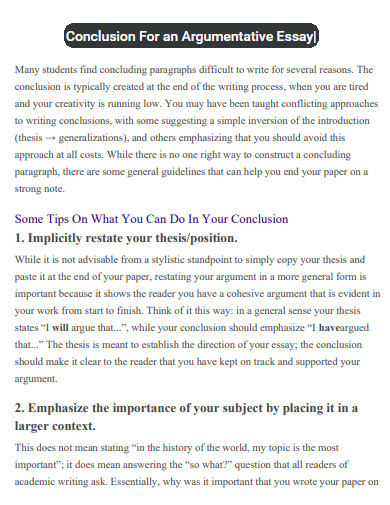
Size: 110 KB
2. University Essay Conclusion
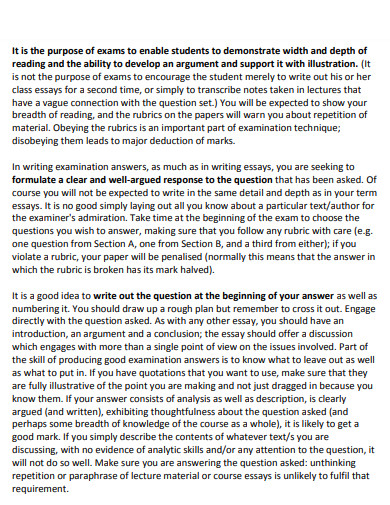
Size: 857 KB
3. Essay Conclusion Structure
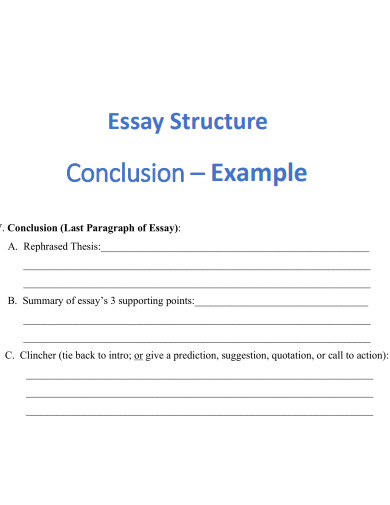
Size: 529 KB
4. English Essay Conclusion
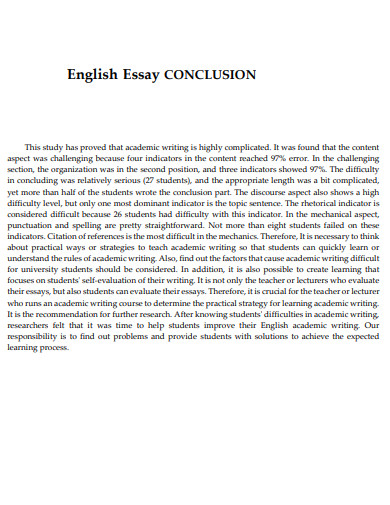
Size: 507 KB
5. Essay Paragraph Conclusion
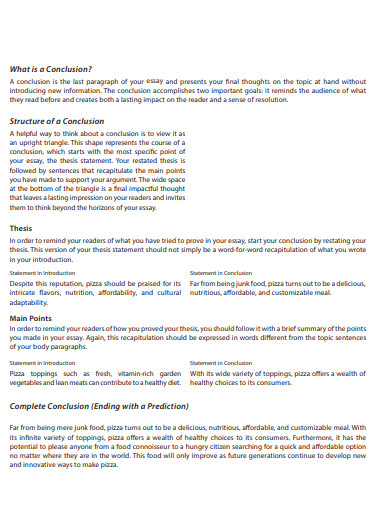
Size: 66 KB
6. Essay on Mental Health Conclusion
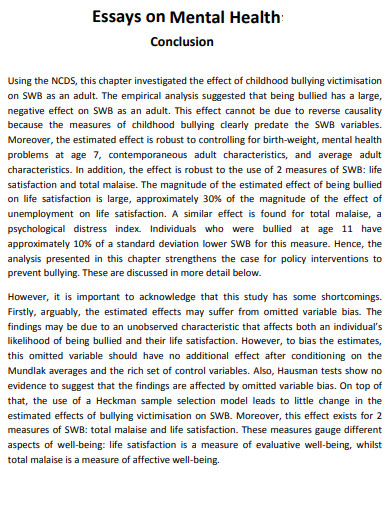
7. Essay on Research Conclusion
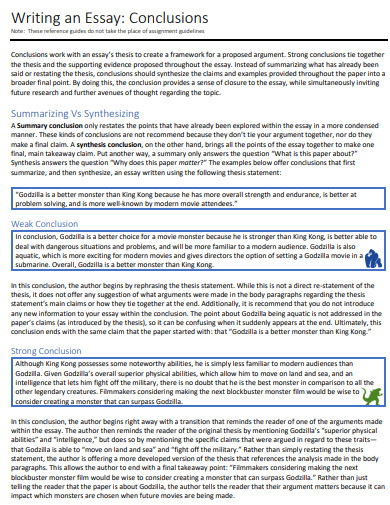
Size: 668 KB
8. Social Media Essay Conclusion
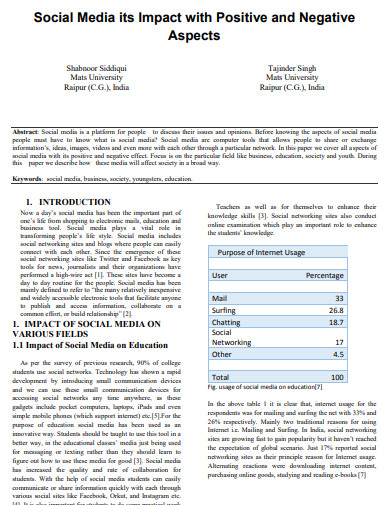
Size: 220 KB
9. Education Essay Conclusion
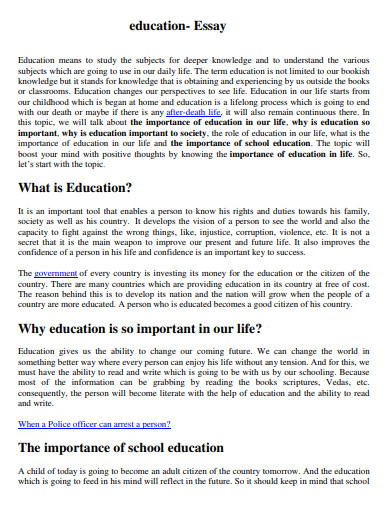
Size: 42 KB
10. Essay Conclusion Sentence
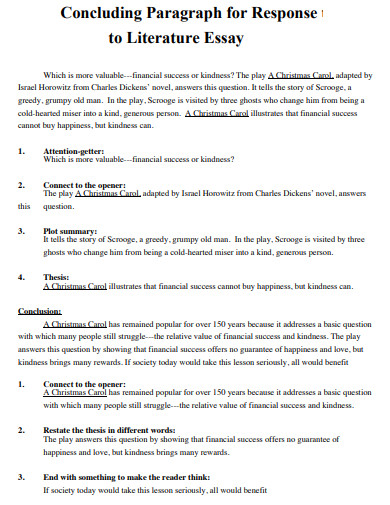
Size: 58 KB
11. Call to Action Essay Conclusion
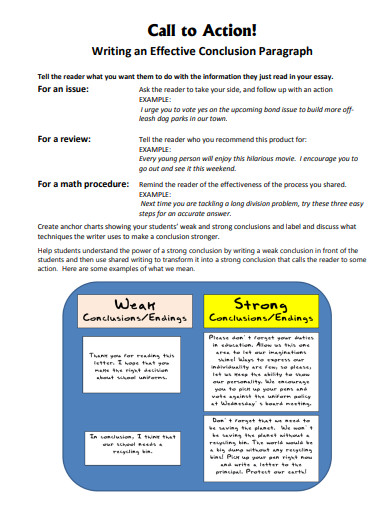
Size: 257 KB
12. Family Essay Conclusion
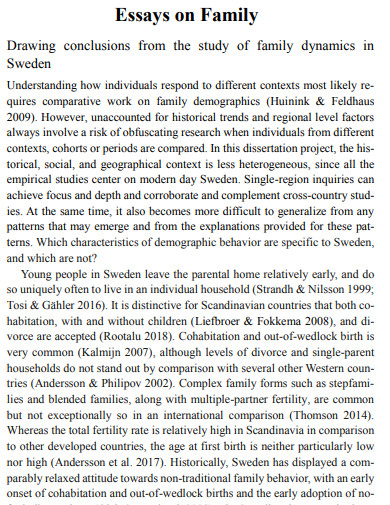
Size: 728 KB
13. Thesis Essay Conclusion
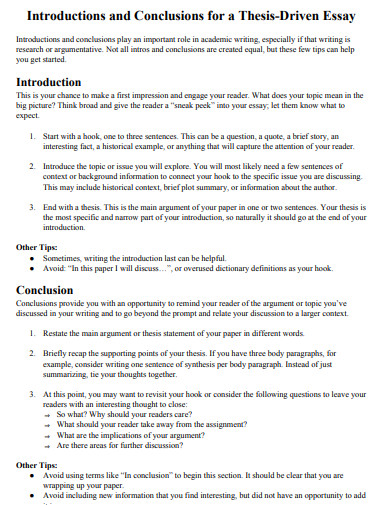
Size: 158 KB
14. Romeo and Juliet Essay Conclusion
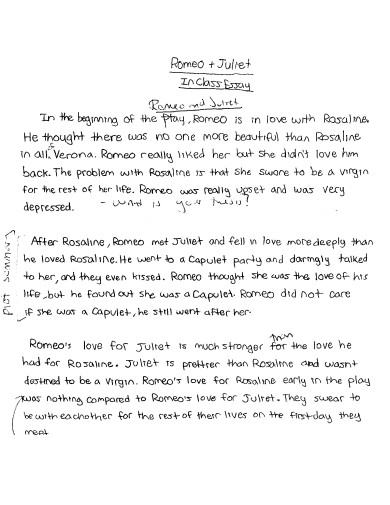
Size: 103 KB
15. Air Pollution Essay Conclusion
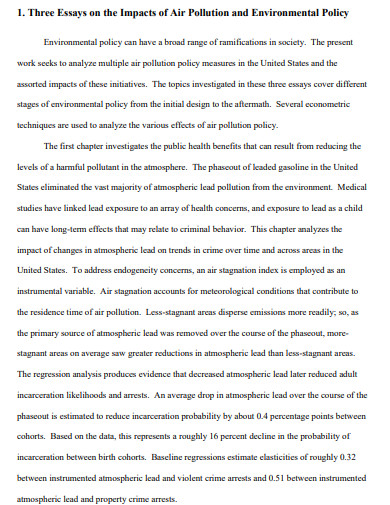
16. Essay Conclusion Template
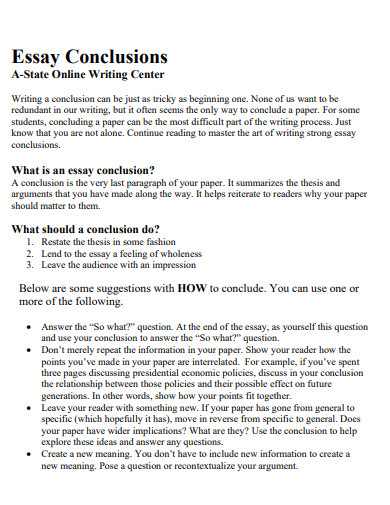
Size: 148 KB
17. Essay Conclusion Example
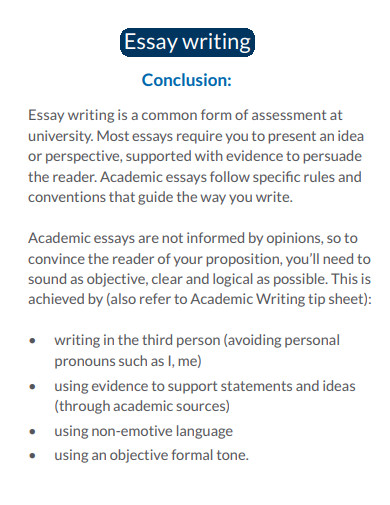
Size: 120 KB
18. Academic Essay Conclusion
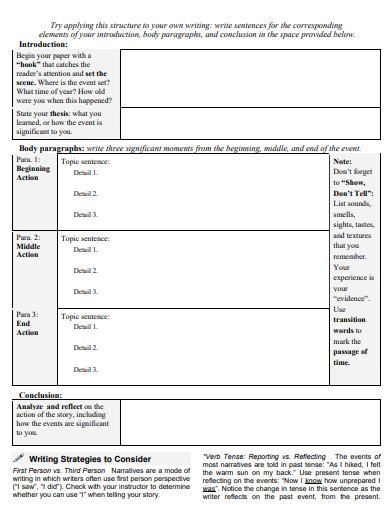
Size: 72 KB
19. Informative Essay Conclusion
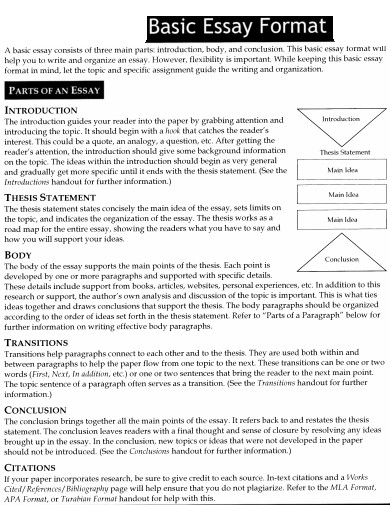
Size: 151 KB
20. Music Essay Conclusion
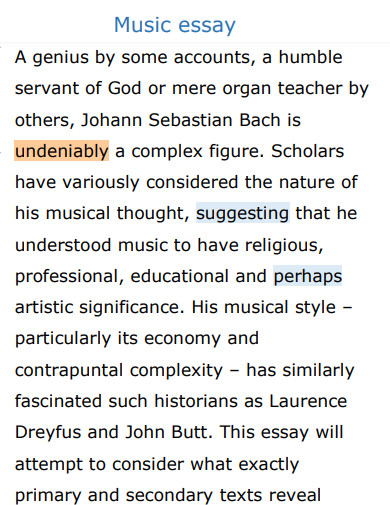
Size: 566 KB
21. 4th Grade Essay Conclusion
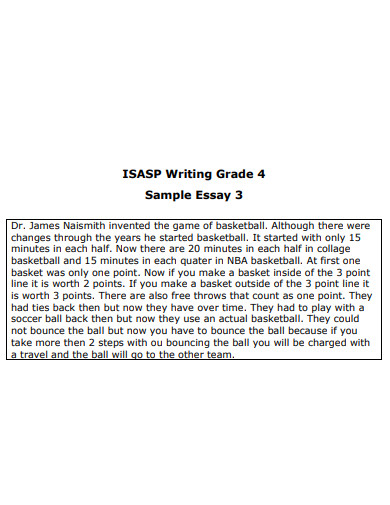
Size: 584 KB
22. 6th Grade Essay Conclusion
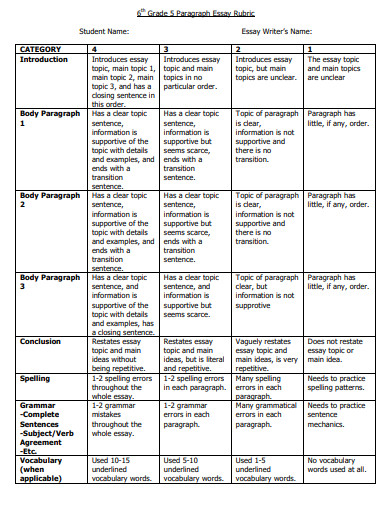
Size: 22 KB
23. Essay on Technology Conclusion
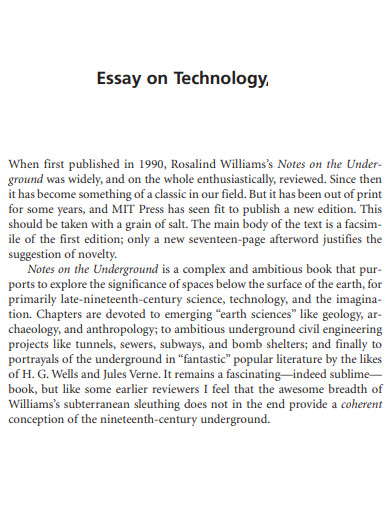
Size: 46 KB
24. Communication Essay Conclusion

Size: 494 KB
25. Deforestation Essay Conclusion
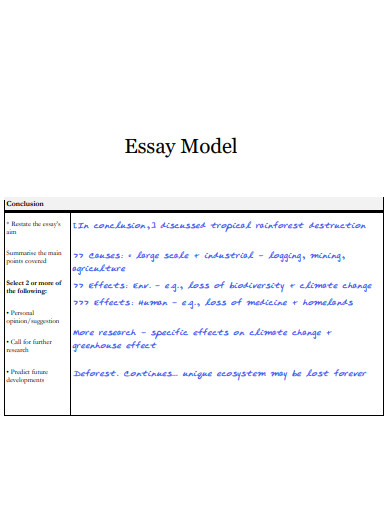
Size: 188 KB
26. Business Essay Conclusion
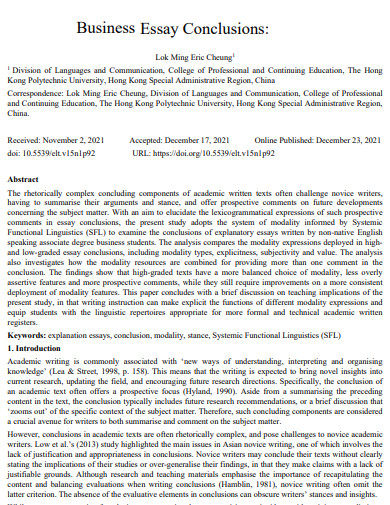
Size: 283 KB
27. Planning Guide Essay Conclusion

Size: 182 KB
28. Basic Essay Conclusion
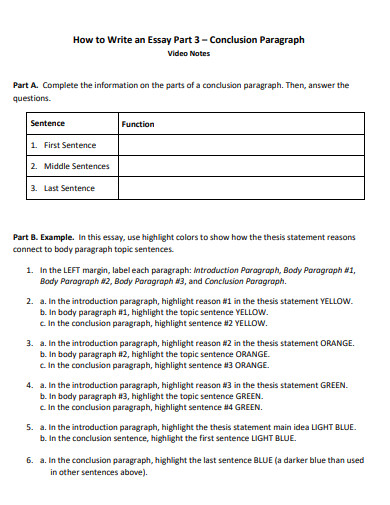
Size: 123 KB
29. Leadership Essay Conclusion
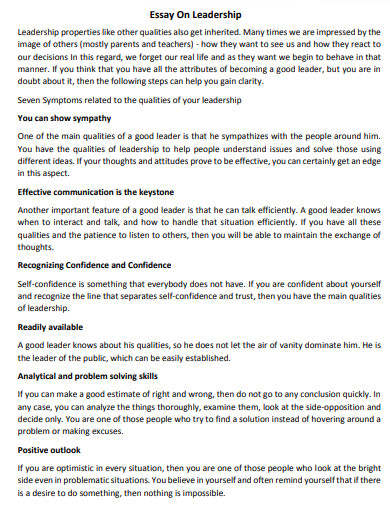
Size: 194 KB
30. Standard Essay Conclusion
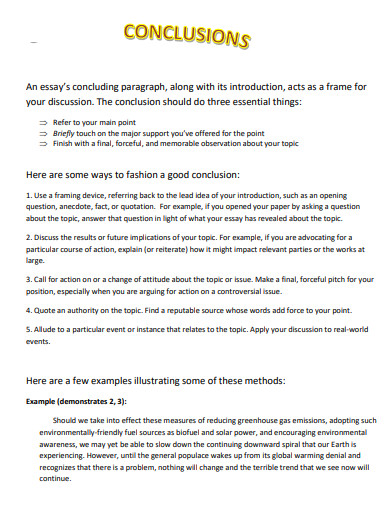
Size: 276 KB
What is an Essay Conclusion?
An essay conclusion serves as the final segment of your written composition. It brings together all the ideas, arguments, and evidence presented throughout the essay and synthesizes them into a concise and coherent final statement. Think of it as the grand finale that encapsulates your main points and leaves a lasting impression on your readers.
How to Write an Essay Conclusion
To create a compelling essay conclusion, follow these step-by-step guidelines
Step 1: Restate your thesis:
Begin by restating your thesis statement, reminding readers of the central argument you have been supporting throughout your essay. However, avoid repeating it verbatim. Instead, rephrase it to maintain reader engagement.
Step 2: Summarize your main points:
Provide a succinct summary of the key points and arguments discussed in the body paragraphs. Focus on the most significant aspects while maintaining a logical flow. Avoid introducing new information or ideas at this stage.
Step 3: Emphasize the significance:
Highlight the broader implications of your essay’s topic and the relevance of your arguments in a wider context. Convey the importance of your findings and their potential impact on the subject matter or the reader’s perspective.
Step 4: Evoke emotions:
Create an emotional connection with your readers by emphasizing the significance of your topic or appealing to their values and beliefs. Stirring emotions can leave a lasting impact and make your conclusion more memorable.
Step 5: Offer a call to action or recommendation:
Depending on the nature of your essay, conclude with a call to action or a thoughtful recommendation that encourages readers to consider further action or reflection on the topic. This can inspire them to continue exploring or take specific steps related to the subject matter.
What is the ideal length for an essay conclusion?
The length of an essay conclusion varies depending on the overall length of your essay. As a general guideline, aim for a conclusion that is concise yet comprehensive, spanning approximately 10-15% of your total essay length.
Can I introduce new information in my essay conclusion?
Avoid introducing new information or arguments in your conclusion. Instead, focus on summarizing and reinforcing the ideas already presented, providing a sense of closure to your essay.
How can I make my essay conclusion more impactful?
To make your essay conclusion more impactful, strive for clarity, emotional resonance, and a sense of closure. Utilize strong language, vivid imagery, and rhetorical devices to leave a lasting impression on your readers.
Just as every book needs a captivating ending to satisfy its readers, your essay deserves a conclusion that lingers in the minds of your audience. By employing the strategies discussed here, you can transform your essay conclusions into thought-provoking reflections, leaving your readers with a sense of fulfillment and a desire to explore your ideas further.
If you’re hungry for more examples and guidance, here are some related articles to inspire you:
- Dive into the world of narratives with 26+ Narrative Essay Examples in PDF .
- Explore the diverse realm of collage essays with 20+ College Essay Examples .
- Enhance your analytical skills with 4+ Interview Analysis Essay Examples in PDF .
- Master concise reporting with 11+ Short Report Essay Examples .
- Uncover the secrets of academic writing with 4+ Short Academic Essay Examples .
- Understand the essay text structure to elevate your writing.
- Delve into self-reflection with 7+ Self Evaluation Essay Examples in PDF .
- Craft persuasive arguments with an Argument Essay .
- For a comprehensive understanding of essay writing, refer to 21+ Essay Writing Examples in PD F.
Remember, the conclusion is your final chance to leave a lasting impact on your readers. Mastering the art of essay conclusions will undoubtedly elevate your writing and captivate your audience. So, go forth and craft memorable endings that resonate with the hearts and minds of your readers.
Text prompt
- Instructive
- Professional
Write an essay conclusion on the future of space exploration.
Develop an essay conclusion on the long-term effects of the internet on human cognition.
How to Write an Effective “About Me” Page (Examples Included!)

An “About Me” page is one of the most crucial elements of any personal website, portfolio , or blog. It’s where visitors get to know who you are, what you do, and why they should care. Whether you're a freelancer , entrepreneur , or creative professional , this page can make or break a visitor’s first impression of you.
Let’s dive into the essentials of creating a standout one pager about yourself, provide actionable tips, and share examples to inspire you.
Add an “About Me” to your resume or portfolio and then put it to the test! Apply to these open jobs on The Muse »
What is an “About Me” page?
An “About Me” page is a dedicated section on your website where you introduce yourself to your visitors. This page goes beyond a simple biography and a list of your credentials; it's an opportunity to convey your personality, share your story, and connect with your audience on a deeper level.
It often includes key elements such as a brief professional summary , personal anecdotes, and highlights of your skills and experiences. By providing a narrative of your journey, accomplishments, and aspirations, you create a relatable and authentic presence that can engage and build trust with your visitors.
An “About Me” page serves multiple purposes:
- It outlines your mission and vision, helping visitors understand what motivates you and what sets you apart.
- It can serve as a platform to showcase testimonials, notable projects, and any media coverage or recognition you have received.
- Your story helps humanize your brand. People connect with people, not faceless entities.
- It lets visitors know what they can expect from your site and how you can help them.
- A well-crafted “About Me” page can improve your website’s SEO for Google by incorporating relevant keywords and phrases.
Where can you usually find “About Me” pages?
An “About Me” can be a valuable addition to various platforms and contexts. Here are some common uses:
- Personal website: Whether it’s a blog or a personal brand site, an “About Me” page helps visitors understand who you are and why they should follow you.
- Portfolio: For creatives like designers, writers , and photographers, an “About Me” page showcases your background and expertise, helping potential clients or employers get to know you better.
- Resume: Adding an “About Me” section to your online resume provides a personal touch and highlights your unique strengths and career journey.
- Business website: Entrepreneurs and small business owners can use an “About Me” page to share their story, mission, and the values behind their business.
- Freelance profiles: On freelance platforms, an “About Me” page can differentiate you from other freelancers by highlighting your experience and skills.
- Social media profiles: Sites like LinkedIn benefit from a detailed “About Me” section, helping you network and connect with potential employers or collaborators.
- Author pages: For writers and authors, an “About Me” page helps readers connect with you on a personal level and understand the inspiration behind your work.
- E-commerce sites: Store owners can add an “About Me” page to build trust with customers by sharing their journey and the story behind their products.
- Professional associations: Members of professional organizations can use an “About Me” page to share their professional background, expertise, and contributions to their field.
Checklist for “About Me” pages
What to include in an “About Me” page? Effective content should include the following elements:
- Your name and profession : Clearly state who you are and what you do.
- A photo : Adding a photo humanizes your profile and makes it more relatable.
- Your story : Share your background, journey, and what inspired you to pursue your path.
- Your values and mission : Explain what drives you and what you aim to achieve.
- Your skills and expertise : Highlight your key skills, qualifications, and achievements.
- Testimonials : If applicable, include testimonials from clients or colleagues to build credibility.
- Contact information : Provide a way for visitors to get in touch with you.
How to write an “About Me” in 5 steps
Writing an “About Me” page involves balancing personal storytelling with professional insights. Here are five tips to help structure yours.
1. Start with a strong—and catchy—opening
Begin with a compelling hook that grabs the reader’s attention. This could be an interesting fact, a personal anecdote, or a bold statement about your mission.
2. Who are you?
Provide a brief introduction that includes your name, profession, and a high-level overview of what you do. Make sure to keep it concise and engaging.
3. Tell your story
Narrate your journey—how you got started, the challenges you’ve overcome, and the milestones you’ve achieved. This is where you can infuse your personality and make your story relatable.
4. Highlight your expertise
Explain what you do and how you can help your audience. Call out your skills , qualifications, and any notable accomplishments.
5. Include a call to action (CTA)
A call to action is a prompt that tells your visitors what to do next, like contacting you, following you on social media, or checking out your portfolio. Make sure your CTA is clear and compelling so they know exactly what action to take.
Bonus tips on writing an “About Me” page
To write an “about me” paragraph that not only introduces you effectively but also engages your audience and enhances your online presence, follow these recommendations:
- Know your audience: Understand who you are writing for. Tailor your tone and content to resonate with your target audience.
- Be authentic : Authenticity is key. Be genuine in your storytelling and avoid overly formal language.
- Keep it concise: While it’s important to provide enough detail, avoid overwhelming your readers with too much information. Aim for clarity and brevity.
- Use visuals: Incorporate photos, videos, or infographics to make your page visually appealing and engaging.
- Optimize for SEO: Incorporate relevant keywords naturally throughout your “About Me” page to improve search engine visibility.
- Update regularly: Your “About Me” page should evolve as you grow. Regularly update it to reflect new experiences, skills, and achievements.
“About Me” template text
How to write an “About Me”? Here’s a simple and general template to get you started:
[Your name]
[Your profession/title]
Introduction:
Hi, I’m [Your name], a [Your profession] with [number] years of experience in [your field]. I’m passionate about [your passion] and have dedicated my career to [your mission].
Your story:
My journey began [describe how you started]. Over the years, I’ve [mention key milestones and achievements]. My work has been featured in [mention notable publications or collaborations].
Your expertise:
I specialize in [mention your key skills and areas of expertise]. My clients have included [mention notable clients or projects].
Call to action:
If you’d like to [mention what you want your readers to do next – contact you, follow you, etc.], feel free to [provide contact details or a CTA].
“About Me” page examples for different scenarios
You might be looking for information on how to write your “About Me” page for your new blog, maybe your LinkedIn profile, or other context. These could have some differences, so find the “About Me” paragraph example that suits you best.
For a website: “About Me” blog example
Hi, I’m Sarah, a passionate travel blogger who has visited over 50 countries. I share my adventures, tips, and travel guides to help you plan your next trip. My journey began in 2010 when I left my corporate job to explore the world. Since then, I’ve been featured in numerous travel magazines and have collaborated with top travel brands. Follow along as I explore new destinations and share my insights.
Portfolio “About Me” example
Hello! I’m Mark, a freelance graphic designer with over 10 years of experience in creating stunning visuals for brands. My work includes logo design, branding, and digital marketing materials. I started my career working for a design agency, but my passion for creativity led me to freelance. My clients include Fortune 500 companies and startups alike. Take a look at my portfolio to see my work and let’s collaborate on your next project.
For your resume: What is an example of best “About Me”?
I’m Emily, a marketing professional with a decade of experience in digital marketing and brand strategy. I specialize in SEO, content marketing, and social media management. My career highlights include leading successful campaigns for high-profile clients and earning industry awards. I’m currently seeking new opportunities to leverage my skills and drive impactful marketing initiatives.
Other type of site: “About Me” example
As a bestselling author, I’ve always been passionate about storytelling. My journey began with a love for reading, which soon transformed into writing my own stories. Over the years, I’ve published five novels and numerous short stories. My work explores themes of love, loss, and resilience, drawing inspiration from my personal experiences. When I’m not writing, you can find me at book signings or conducting writing workshops.
- Share full article
Advertisement
Supported by
Writing Curriculum
Teach Writing With The New York Times: Our 2024-25 Curriculum
Our nine writing units are based on real-world features like reviews, photo essays, narratives, podcasts and more.

By The Learning Network
Please note: Fully updated versions of each unit, as well as all supporting materials, will be published before each related contest opens for submissions.
What can the news, features, essays, interviews, photos, videos, podcasts and graphics in The New York Times teach your students about composing for a real audience? So much, we hope, that the units we detail below are just a beginning.
Our writing curriculum is a road map for teachers as well as an invitation to students. For teachers, it organizes our offerings into nine units, each of which focuses on a different genre or type of composing that your students can find not just in The Times but also in all kinds of real-world sources.
For students, these units offer confirmation that they have something valuable to say, choices about how to say it and a global audience eager to listen. Promoting student voices has always been a pillar of our site, and through the opportunities for publication woven into each unit, we want to encourage students to go beyond simply consuming media to becoming creators themselves.
Though some of the units spotlight mediums like photography or podcasting, writing is at the heart of each one. All our units begin and end with written reflection and depend on writing throughout — to plan and organize, to outline and script, to summarize and process. Increasingly, Times journalists are composing in multimedia, weaving photos, illustrations, video and audio into their written reports. We’re inviting students to do the same.
We are having trouble retrieving the article content.
Please enable JavaScript in your browser settings.
Thank you for your patience while we verify access. If you are in Reader mode please exit and log into your Times account, or subscribe for all of The Times.
Thank you for your patience while we verify access.
Already a subscriber? Log in .
Want all of The Times? Subscribe .

How to cite ChatGPT

Use discount code STYLEBLOG15 for 15% off APA Style print products with free shipping in the United States.
We, the APA Style team, are not robots. We can all pass a CAPTCHA test , and we know our roles in a Turing test . And, like so many nonrobot human beings this year, we’ve spent a fair amount of time reading, learning, and thinking about issues related to large language models, artificial intelligence (AI), AI-generated text, and specifically ChatGPT . We’ve also been gathering opinions and feedback about the use and citation of ChatGPT. Thank you to everyone who has contributed and shared ideas, opinions, research, and feedback.
In this post, I discuss situations where students and researchers use ChatGPT to create text and to facilitate their research, not to write the full text of their paper or manuscript. We know instructors have differing opinions about how or even whether students should use ChatGPT, and we’ll be continuing to collect feedback about instructor and student questions. As always, defer to instructor guidelines when writing student papers. For more about guidelines and policies about student and author use of ChatGPT, see the last section of this post.
Quoting or reproducing the text created by ChatGPT in your paper
If you’ve used ChatGPT or other AI tools in your research, describe how you used the tool in your Method section or in a comparable section of your paper. For literature reviews or other types of essays or response or reaction papers, you might describe how you used the tool in your introduction. In your text, provide the prompt you used and then any portion of the relevant text that was generated in response.
Unfortunately, the results of a ChatGPT “chat” are not retrievable by other readers, and although nonretrievable data or quotations in APA Style papers are usually cited as personal communications , with ChatGPT-generated text there is no person communicating. Quoting ChatGPT’s text from a chat session is therefore more like sharing an algorithm’s output; thus, credit the author of the algorithm with a reference list entry and the corresponding in-text citation.
When prompted with “Is the left brain right brain divide real or a metaphor?” the ChatGPT-generated text indicated that although the two brain hemispheres are somewhat specialized, “the notation that people can be characterized as ‘left-brained’ or ‘right-brained’ is considered to be an oversimplification and a popular myth” (OpenAI, 2023).
OpenAI. (2023). ChatGPT (Mar 14 version) [Large language model]. https://chat.openai.com/chat
You may also put the full text of long responses from ChatGPT in an appendix of your paper or in online supplemental materials, so readers have access to the exact text that was generated. It is particularly important to document the exact text created because ChatGPT will generate a unique response in each chat session, even if given the same prompt. If you create appendices or supplemental materials, remember that each should be called out at least once in the body of your APA Style paper.
When given a follow-up prompt of “What is a more accurate representation?” the ChatGPT-generated text indicated that “different brain regions work together to support various cognitive processes” and “the functional specialization of different regions can change in response to experience and environmental factors” (OpenAI, 2023; see Appendix A for the full transcript).
Creating a reference to ChatGPT or other AI models and software
The in-text citations and references above are adapted from the reference template for software in Section 10.10 of the Publication Manual (American Psychological Association, 2020, Chapter 10). Although here we focus on ChatGPT, because these guidelines are based on the software template, they can be adapted to note the use of other large language models (e.g., Bard), algorithms, and similar software.
The reference and in-text citations for ChatGPT are formatted as follows:
- Parenthetical citation: (OpenAI, 2023)
- Narrative citation: OpenAI (2023)
Let’s break that reference down and look at the four elements (author, date, title, and source):
Author: The author of the model is OpenAI.
Date: The date is the year of the version you used. Following the template in Section 10.10, you need to include only the year, not the exact date. The version number provides the specific date information a reader might need.
Title: The name of the model is “ChatGPT,” so that serves as the title and is italicized in your reference, as shown in the template. Although OpenAI labels unique iterations (i.e., ChatGPT-3, ChatGPT-4), they are using “ChatGPT” as the general name of the model, with updates identified with version numbers.
The version number is included after the title in parentheses. The format for the version number in ChatGPT references includes the date because that is how OpenAI is labeling the versions. Different large language models or software might use different version numbering; use the version number in the format the author or publisher provides, which may be a numbering system (e.g., Version 2.0) or other methods.
Bracketed text is used in references for additional descriptions when they are needed to help a reader understand what’s being cited. References for a number of common sources, such as journal articles and books, do not include bracketed descriptions, but things outside of the typical peer-reviewed system often do. In the case of a reference for ChatGPT, provide the descriptor “Large language model” in square brackets. OpenAI describes ChatGPT-4 as a “large multimodal model,” so that description may be provided instead if you are using ChatGPT-4. Later versions and software or models from other companies may need different descriptions, based on how the publishers describe the model. The goal of the bracketed text is to briefly describe the kind of model to your reader.
Source: When the publisher name and the author name are the same, do not repeat the publisher name in the source element of the reference, and move directly to the URL. This is the case for ChatGPT. The URL for ChatGPT is https://chat.openai.com/chat . For other models or products for which you may create a reference, use the URL that links as directly as possible to the source (i.e., the page where you can access the model, not the publisher’s homepage).
Other questions about citing ChatGPT
You may have noticed the confidence with which ChatGPT described the ideas of brain lateralization and how the brain operates, without citing any sources. I asked for a list of sources to support those claims and ChatGPT provided five references—four of which I was able to find online. The fifth does not seem to be a real article; the digital object identifier given for that reference belongs to a different article, and I was not able to find any article with the authors, date, title, and source details that ChatGPT provided. Authors using ChatGPT or similar AI tools for research should consider making this scrutiny of the primary sources a standard process. If the sources are real, accurate, and relevant, it may be better to read those original sources to learn from that research and paraphrase or quote from those articles, as applicable, than to use the model’s interpretation of them.
We’ve also received a number of other questions about ChatGPT. Should students be allowed to use it? What guidelines should instructors create for students using AI? Does using AI-generated text constitute plagiarism? Should authors who use ChatGPT credit ChatGPT or OpenAI in their byline? What are the copyright implications ?
On these questions, researchers, editors, instructors, and others are actively debating and creating parameters and guidelines. Many of you have sent us feedback, and we encourage you to continue to do so in the comments below. We will also study the policies and procedures being established by instructors, publishers, and academic institutions, with a goal of creating guidelines that reflect the many real-world applications of AI-generated text.
For questions about manuscript byline credit, plagiarism, and related ChatGPT and AI topics, the APA Style team is seeking the recommendations of APA Journals editors. APA Style guidelines based on those recommendations will be posted on this blog and on the APA Style site later this year.
Update: APA Journals has published policies on the use of generative AI in scholarly materials .
We, the APA Style team humans, appreciate your patience as we navigate these unique challenges and new ways of thinking about how authors, researchers, and students learn, write, and work with new technologies.
American Psychological Association. (2020). Publication manual of the American Psychological Association (7th ed.). https://doi.org/10.1037/0000165-000
Related and recent
Comments are disabled due to your privacy settings. To re-enable, please adjust your cookie preferences.
APA Style Monthly
Subscribe to the APA Style Monthly newsletter to get tips, updates, and resources delivered directly to your inbox.
Welcome! Thank you for subscribing.
APA Style Guidelines
Browse APA Style writing guidelines by category
- Abbreviations
- Bias-Free Language
- Capitalization
- In-Text Citations
- Italics and Quotation Marks
- Paper Format
- Punctuation
- Research and Publication
- Spelling and Hyphenation
- Tables and Figures
Full index of topics

THE QUEEN'S COMMONWEALTH ESSAY COMPETITION
Since 1883, we have delivered The Queen's Commonwealth Essay Competition, the world's oldest international schools' writing competition. Today, we work to expand its reach, providing life-changing opportunities for young people around the world.

The Queen’s Commonwealth Essay Competition 2024 is now closed for entries
Find out more about this year’s theme
'Our Common Wealth'.

140 years of The Queen’s Commonwealth Essay Competition
The Queen’s Commonwealth Essay Competition (QCEC) is the world’s oldest international writing competition for schools and has been proudly delivered by the Royal Commonwealth Society since 1883.

ABOUT THE COMPETITION
An opportunity for young Commonwealth citizens to share their thoughts, ideas and experiences on key global issues and have their hard work and achievement celebrated internationally.

Frequently Asked Questions for the Competition. Before contacting us please read these.

MEET THE WINNERS
In 2023 we were delighted to receive a record-breaking 34,924 entries, with winners from India and Malaysia. Read their winning pieces as well as those from previous years.

TERMS AND CONDITIONS
Terms and Conditions for entrants to The Queen’s Commonwealth Essay Competition. Please ensure you have thoroughly read them before submitting your entry.

Harvard University 2024-25 Supplemental Essay Prompt Guide
Early Action: Nov 1
Regular Decision Deadline: Jan 1
Harvard University 2024-25 Application Essay Question Explanations
The Requirements: Five essays of 100 words or fewer
Supplemental Essay Type(s): Diversity , Activity , Oddball
The following required five short answer questions invite you to reflect on and share how your life experiences and academic and extracurricular activities shaped you, how you will engage with others at Harvard, and your aspirations for the future. Each question can be answered in about 100 words.
Harvard has long recognized the importance of enrolling a diverse student body. how will the life experiences that shape who you are today enable you to contribute to harvard .
Admissions wants to know what has made you into the person you are today and how those experiences will affect the way you engage with and contribute to the Harvard community. So, tell a story about an experience that has shaped you and connect the lessons you learned to the ways in which you will contribute to diversity on campus next fall. Start by thinking about the kinds of experiences you’ve had in the communities you’ve been a part of thus far. Then, once you’ve identified the life experience(s) that have shaped you, think ahead to how those will impact your time at Harvard. Admissions wants to know what your area of influence will look like on campus—whether that be applying the leadership skills you developed in your community theater troupe to the drama productions at Farkas Hall, celebrating intersectional identities with other members of the queer Jewish community with BAGELS , or connecting and networking with your peers through Harvard Black Students Association . Whatever you write about, make sure your response to this prompt shows that you have put some serious thought into the things that have shaped you and how you will apply those lessons and experiences to your time at Harvard next fall.
Describe a time when you strongly disagreed with someone about an idea or issue. How did you communicate or engage with this person? What did you learn from this experience?
Whether during a pregame pasta party with your teammates, a long bus ride with classmates, or your family Thanksgiving dinner, odds are you’ve disagreed with someone about an idea or an issue—and Harvard wants to hear about it. Admissions wants to know not only how you went about engaging with someone with an opposing viewpoint, but also what you took away from the experience. To make sure your response stands out from the pack, be as specific and purposeful as possible. What did you disagree on and how did you communicate? Maybe you used some deescalating tools you picked up from a friend of yours or, perhaps, you made an effort to see things from their point of view while still making a case for your perspective. If you can’t recall where you were at the time, no problem; but details are your friend here to add credibility. Whatever conversation you decide to write about, remember to address what you learned from the experience. Were you introduced to a point of view that you hadn’t considered before? Did you and your conversation partner find a middle ground or did you feel even more resolute in your viewpoint than you had before the conversation? Maybe what you took away wasn’t so much about the topic of the conversation, but the mechanics of holding a difficult conversation. Show Harvard that you can consider new ideas and engage with others about important issues.
Briefly describe any of your extracurricular activities, employment experience, travel, or family responsibilities that have shaped who you are.
Next up is a fun twist on the classic activity essay, which asks you to expand on an extracurricular endeavor that has shaped who you are. Our advice is to focus on one or two activities that have made the biggest impact on you. Although we usually urge students to write about items that haven’t appeared elsewhere on their application, the activity essay is an exception since it specifically asks you to address an item on your resume. The trick here is to pick something with meat! Maybe your trip to visit your extended family members in Thailand opened your eyes to how limited your world had been in your small Midwestern town. Perhaps four years of debate club have nurtured your communication skills and ability to speak up for yourself. Whatever activity you choose to write about, be sure to pick one that has been fundamental to your understanding of who you are.
How do you hope to use your Harvard education in the future?
Admissions already knows a bit about what makes you you; now they want to know why Harvard is the obvious next step in the trajectory of your life. Take some time to meditate on what you hope your life will look like after Harvard—we’re talking ten, twenty years in the future. Once you have an idea of what you hope for that person to be like or do on an average day, invite admissions into your vision and show them how a Harvard education is a pivotal step (or three) on the ladder of success to get there. Regardless of your vision, your response should cite programs, activities, and organizations that Harvard offers. Anyone can say they hope to become a renowned doctor or an attorney for the people, but not everyone is going to do their homework to show admissions that they’ve thought through exactly how they want to get there. Of course, admissions isn’t going to hold you to your blueprint, but they do want to see that you’ve given not only your decision to apply to Harvard some serious thought, but your life post-graduation as well.
Top 3 things your roommates might like to know about you.
With this prompt, admissions is hoping to see a different side of you, perhaps one that is less intellectual (unless that’s just who you are, in which case, rock on with your nerdy self) and a little more casual. Start by making a list. Write down everything that comes to mind. You can edit and revise later—no idea is too silly to jot down! Maybe you think your roommates should know that you just can’t not sing while in the shower (we’re talking Celine Dion, Adele, Whitney Houston) or that you make the meanest plate of rice and beans in your pressure cooker (and you love to share). Once you’ve narrowed your list down to three (3) things, see if you can weave together a narrative that gives admissions a little taste of what it would be like to hang out in the dorms with you. How do you connect with your peers? What most excites you about residential life? What are the quirks that make you you ? By the time admissions puts down your application, they should feel like your personality is jumping off the page.
About Amanda Amah
View all posts by Amanda Amah »
We're waiting for your call.
Frequently Asked Questions
Harvard asks applicants to write five (5) supplemental essays.
Harvard wants to learn more about the students applying. Admissions is looking to glean how your life experiences have shaped you, how you will engage with other community members on campus, your aspirations for the future, and more.
Authenticity and reflection are key. You want to both ensure that you’re submitting essays that no one else could submit—meaning they contain specific details from your life or interests that aren’t easily replicable—and show that you’ve put thought and care into your response.
The Harvard supplemental essays, aside from your personal statement, are the only opportunities you have to speak to admissions in your own voice. They offer insight into what it would be like to sit down and have a conversation with you while revealing how you interact with the world around you. They also speak to your writing skills and creativity.
Absolutely not! The admissions committee will be reading both your Common App essay and Harvard supplements, so your essays should not overlap in content at all. Of course, it’s possible you may mention a community you belong to in your personal statement and then expand on that life experience in one of your supplements, but the story should be different and reveal new information about you that admissions couldn’t have gathered from your Common App essay alone.
Each Harvard essay should be 100 words maximum.
We always recommend reviewing the prompts and writing down everything that comes to mind (no censoring yourself!). Next, comb through your ideas to see if any topics jump out at you. And if you skipped the guide above, more brainstorming ideas and advice for writing memorable Harvard supplemental essays can be found there!
Contact us for information on rates and more!
- I am a * Student Parent Potential Partner School Counselor Private College Counselor
- Name * First Last
- Phone Type Mobile Landline
- Street Address
- Address City State / Province / Region Afghanistan Albania Algeria American Samoa Andorra Angola Anguilla Antarctica Antigua and Barbuda Argentina Armenia Aruba Australia Austria Azerbaijan Bahamas Bahrain Bangladesh Barbados Belarus Belgium Belize Benin Bermuda Bhutan Bolivia Bonaire, Sint Eustatius and Saba Bosnia and Herzegovina Botswana Bouvet Island Brazil British Indian Ocean Territory Brunei Darussalam Bulgaria Burkina Faso Burundi Cabo Verde Cambodia Cameroon Canada Cayman Islands Central African Republic Chad Chile China Christmas Island Cocos Islands Colombia Comoros Congo Congo, Democratic Republic of the Cook Islands Costa Rica Croatia Cuba Curaçao Cyprus Czechia Côte d'Ivoire Denmark Djibouti Dominica Dominican Republic Ecuador Egypt El Salvador Equatorial Guinea Eritrea Estonia Eswatini Ethiopia Falkland Islands Faroe Islands Fiji Finland France French Guiana French Polynesia French Southern Territories Gabon Gambia Georgia Germany Ghana Gibraltar Greece Greenland Grenada Guadeloupe Guam Guatemala Guernsey Guinea Guinea-Bissau Guyana Haiti Heard Island and McDonald Islands Holy See Honduras Hong Kong Hungary Iceland India Indonesia Iran Iraq Ireland Isle of Man Israel Italy Jamaica Japan Jersey Jordan Kazakhstan Kenya Kiribati Korea, Democratic People's Republic of Korea, Republic of Kuwait Kyrgyzstan Lao People's Democratic Republic Latvia Lebanon Lesotho Liberia Libya Liechtenstein Lithuania Luxembourg Macao Madagascar Malawi Malaysia Maldives Mali Malta Marshall Islands Martinique Mauritania Mauritius Mayotte Mexico Micronesia Moldova Monaco Mongolia Montenegro Montserrat Morocco Mozambique Myanmar Namibia Nauru Nepal Netherlands New Caledonia New Zealand Nicaragua Niger Nigeria Niue Norfolk Island North Macedonia Northern Mariana Islands Norway Oman Pakistan Palau Palestine, State of Panama Papua New Guinea Paraguay Peru Philippines Pitcairn Poland Portugal Puerto Rico Qatar Romania Russian Federation Rwanda Réunion Saint Barthélemy Saint Helena, Ascension and Tristan da Cunha Saint Kitts and Nevis Saint Lucia Saint Martin Saint Pierre and Miquelon Saint Vincent and the Grenadines Samoa San Marino Sao Tome and Principe Saudi Arabia Senegal Serbia Seychelles Sierra Leone Singapore Sint Maarten Slovakia Slovenia Solomon Islands Somalia South Africa South Georgia and the South Sandwich Islands South Sudan Spain Sri Lanka Sudan Suriname Svalbard and Jan Mayen Sweden Switzerland Syria Arab Republic Taiwan Tajikistan Tanzania, the United Republic of Thailand Timor-Leste Togo Tokelau Tonga Trinidad and Tobago Tunisia Turkmenistan Turks and Caicos Islands Tuvalu Türkiye US Minor Outlying Islands Uganda Ukraine United Arab Emirates United Kingdom United States Uruguay Uzbekistan Vanuatu Venezuela Viet Nam Virgin Islands, British Virgin Islands, U.S. Wallis and Futuna Western Sahara Yemen Zambia Zimbabwe Åland Islands Country
- Which best describes you (or your child)? High school senior High school junior College student College grad Other
- How did you find CEA? Internet Search New York Times Guidance counselor/school Social Media YouTube Friend Special Event Delehey College Consulting Other
- Common App and Coalition Essays
- Supplemental Essays
- University of California Essays
- University of Texas Essays
- Resume Review
- Post-Grad Essays
- Specialized Services
- Waitlist Letters
- Private School Essays
- General College Counseling
- School list with priorities noted:
- Anything else we should know?
- Phone This field is for validation purposes and should be left unchanged.
School Stats:
- Agnes Scott College
- Alvernia University
- Amherst College
- Babson College
- Bard College
- Baylor University
- Bennington College
- Berry College
- Bethany College
- Bishop’s University
- Boston College
- Boston University (BU)
- Bowdoin College
- Brandeis University
- Brown University
- Bryn Mawr College
- Bucknell University
- Butler University
- California Institute of Technology (Caltech)
- California Lutheran University
- Capitol Technology University
- Carnegie Mellon University
- Catawba College
- Centre College
- Chapman University
- Claremont McKenna College
- Clark University
- Clemson University
- Coastal Carolina University
- College of Charleston
- College of Wooster
- Colorado School of Mines
- Columbia University
- Cornell University
- Culver-Stockton College
- D'Youville University
- Dartmouth College
- Davidson College
- Duke University
- Earlham College
- Elon University
- Emerson College
- Emory University
- Flagler College
- Fordham University
- George Mason University
- Georgetown University
- Georgia State University
- Georgia Tech
- Harvard University
- Harvey Mudd College
- Haverford College
- Hillsdale College
- Hofstra University
- Illinois Institute of Technology
- Illinois Wesleyan University
- Indiana University Bloomington
- Ithaca College
- Johns Hopkins University
- Kalamazoo College
- Lafayette College
- Lewis and Clark College
- Linfield University
- Loyola Marymount University (LMU)
- Lynn University
- Macalester College
- Malone University
- Manchester University
- Marist College
- Mary Baldwin University
- Massachusetts Institute of Technology (MIT)
- Meredith College
- Monmouth College
- Moravian University
- Morehouse College
- Mount Holyoke College
- New York University (NYU)
- North Park University
- Northwestern University
- Occidental College
- Oklahoma City University
- Olin College of Engineering
- Pepperdine University
- Pitzer College
- Pomona College
- Princeton University
- Providence College
- Purdue University
- Rensselaer Polytechnic Institute
- Rice University
- Roger Williams University
- Saint Elizabeth University
- Santa Clara University
- Sarah Lawrence College
- Scripps College
- Seattle Pacific University
- Smith College
- Soka University of America
- Southern Methodist University
- St. John’s College
- Stanford University
- Stonehill College
- Swarthmore College
- Syracuse University
- Texas A&M University
- Texas Christian University
- The College of Idaho
- The George Washington University
- The New School
- Trinity College
- Tufts University
- Tulane University
- University of California
- University of Central Florida (UCF)
- University of Chicago
- University of Cincinnati
- University of Colorado Boulder
- University of Florida
- University of Georgia (UGA)
- University of Illinois Urbana-Champaign
- University of Maryland
- University of Massachusetts Amherst
- University of Miami
- University of Michigan
- University of Minnesota
- University of North Carolina at Chapel Hill (UNC)
- University of North Carolina at Charlotte
- University of North Carolina at Greensboro
- University of Notre Dame
- University of Oklahoma
- University of Oregon
- University of Pittsburgh
- University of Richmond
- University of San Diego
- University of San Francisco
- University of Southern California (USC)
- University of Texas at Austin
- University of Tulsa
- University of Vermont
- University of Virginia (UVA)
- University of Washington
- University of Wisconsin-Madison
- Vanderbilt University
- Vassar College
- Villanova University
- Virginia Tech
- Wake Forest University
- Washington and Lee University
- Wellesley College
- Williams College
- Worcester Polytechnic Institute (WPI)
- Yale University

Want free stuff?
We thought so. Sign up for free instructional videos, guides, worksheets and more!

One-On-One Advising
Common App Essay Prompt Guide

Supplemental Essay Prompt Guide
- YouTube Tutorials
- Our Approach & Team
- Undergraduate Testimonials
- Postgraduate Testimonials
- Where Our Students Get In
- CEA Gives Back
- Undergraduate Admissions
- Graduate Admissions
- Private School Admissions
- International Student Admissions
- Common App Essay Guide
- Supplemental Essay Guide
- Coalition App Guide
- The CEA Podcast
- Admissions Stats
- Notification Trackers
- Deadline Databases
- College Essay Examples
- Academy and Worksheets
- Waitlist Guides
- Get Started
- Phone: +91 8466016171
- Whatsapp: +91 8208375580
- Email: contact@leapscholar.com
Nuclear Power Essay IELTS 2024: Writing Task 2 Latest Samples
- Last Updated On July 29, 2024
- Published In IELTS Preparation 💻

The IELTS exam tests how well-versed you are in the English language. It consists of four papers: reading, writing, listening, and speaking. Essay writing can be daunting if you’re not conversant in its framework and concept. This blog will assist you in writing Nuclear Power Essay IELTS and guide you on how to crack IELTS writing task 2.
Table of Content
We’ll focus more on the nuclear power essay during this blog and walk you through the process. For guidance and reference on other topics and any other help regarding the IELTS exam, you can look through our website’s collection of blogs and obtain the assistance you need, including writing task 2 topics with answers .

Consult IELTS Expert for a Free Personalised Learning Plan
Improve your IELTS speaking score with a 1:1 consultation.

Nuclear Power Essay IELTS Sample Answer
Nuclear power is a very debated topic in every convention and has always been questioned for the bad it does rather than its good. In my opinion, nuclear power needs to be used, and the user should also be controlled and hedged with renewable energy sources as they are the only viable solution. Nuclear plants currently provide 11% of the world’s electricity. With an ever-increasing demand for electricity being seen everywhere and the fossil fuels reducing each day, it is now more important than ever that major decisions should be made. In the upcoming decades, energy consumption will only increase and meet the rising demand; nuclear power plants will be required as they are the best source of traditional energy-producing sources. Although nuclear power plants are required, it is also necessary to gradually push renewable energy sources and promote them to create a sustainable future for future generations. Nuclear power plants’ waste disposal and radioactivity are the concerning factors that have been the hot topic of most debates at conventions and meetings. In addition to that, a single misuse of this tremendous power can result in the disruption of life for all mankind. Striking a balance between the two will be crucial in the coming time as global warming and the energy crisis are on a constant rise. If nothing is done in the near time, countries could get submerged underwater within the coming decades, and the entire world will have to fight for survival.
Writing Task 2
The writing section of the IELTS exam consists of two sections. Writing task 2 is an essay writing task that requires deep thinking and coherence. This task will be our focus for this blog, as the rules and guidelines of the IELTS exam can be confusing for students appearing for the first time. Writing task 2 has the subsequent guidelines:
- The essay should have a minimum of 250 words. An essay written in less than 250 words will be penalised and negatively marked. There is no penalty for writing a longer essay, but it will cause you to stray off-topic and waste time.
- 40 minutes is a good enough time to complete this task and will leave you with time to recheck your answer.
- The essay’s contents should be written with perfect grammar and solely focused on the topic.
- You can be penalised if you stray off-topic while writing your essay. All the sentences must be related and formed to provide a clear view and information.
- The content must be well structured to fetch the best results and have proper cohesion between the sentences.
- The tone of your answer must be academic or semi-formal and should discuss the given topic at length and focus on proper and sophisticated language.
- Using bullet points and notes is not allowed in the IELTS exam . The real answer must be written together and broken into paragraphs to better examine your writing style and structure.

Excel in IELTS with India’s Top Online Coaching
Leap has helped more than 1 Lakh students achieve 7+ IELTS band.
Structure of Essay in Writing Task 2
The structure of the essay in writing task 2 is the base of your essay, and a clear idea of the structure will make it much easier for you to finish the essay on time. The structure of the essay can be broken down in the following way:
- First Paragraph
- Second Paragraph
- Third Paragraph
- Fourth Paragraph
The first paragraph of your essay should provide a small introduction to the topic and provide an opinion of yours about what side you are on about the topic. The first paragraph should be minimal and to the point. A clear and concise introduction leaves a good impression on the examiner. The second paragraph should begin with your stance on the topic. The first sentence should provide clarity on your stance. The second sentence should build on that idea and delve deeper into the specifics. The next sentences are suitable for providing an example and developing it in detail. You can make up research studies and quote them in your essay to support your point. At the end of the paragraph, end with a statement that sums up the overall idea of the paragraph and supports the idea you started with. The third paragraph is very similar in structure to the second paragraph. The main objective of this paragraph is to provide either the opposite view of the topic or discuss new ideas that touch on a different perspective of the topic but ultimately support your opinion. The structuring is the same as in the second paragraph, with minute changes. The fourth paragraph is the conclusion of your essay and, just like the introduction, should be minimal. Summing up your essay with a statement supporting your opinion and overall idea is best advised.

Score well on IELTS Nuclear Essay by understanding the Writing task 2 structure above. Add Brownie points for writing answers with facts, examples and evidence. For more related content, head on to LeapScholar blogs. Avail of one-on-one guidance from India’s top IELTS educators from the Leap Scholar Premium course.
Explore all countries
Frequently asked questions, 1. what are the pros and cons of nuclear power.
Ans: Nuclear energy is a widely used method of production of electricity. The benefits of nuclear technology and the main advantages of nuclear power are: a. No production of harmful gases that cause air pollution b. Clean source of energy c. Low cost of fuel d. Long-life once constructed e. A massive amount of energy produced f. Unlike most energy production methods, nuclear energy does not contribute to the increase in global warming
Disadvantages: a. Very high cost of construction of the facility. b. Waste produced is very toxic and requires proper and safe disposal, which is costly. c. If any accident happens, it can have a major impact on everyone and can be devastating. d. Mining of uranium 235, which is nuclear fuel, is very expensive.
2. Does Japan have a plan for dealing with its own nuclear waste problem?
Ans: As per the latest news and research, Japan does not have a proper nuclear waste dumping structure even after the Fukushima disaster in 2011. The Fukushima disaster was caused by the Tohoku earthquake and tsunami that hit Japan in 2011 and caused meltdowns and hydrogen explosions at the Fukushima Daiichi Nuclear Reactor. It was the worst recorded nuclear disaster since Chernobyl. Japan is said to have enough nuclear waste to create nuclear arsenals. In April 2021, Japan declared they would be dumping 1.2 million tonnes of nuclear waste into the sea. This is the same Japan that called the 1993 ocean dumping by Russia “extremely regrettable.” The discharges are bound to begin by 2023, and various legal proceedings and protests have been going on inside Japan against this inhuman decision that would destroy marine life.
3. How many countries have nuclear power plants?
Ans : Currently, 32 countries in the world possess nuclear power plants within their boundaries.
4. Why do people oppose nuclear power?
Ans: Opposition to nuclear power has been a long-standing issue. It is backed by a variety of reasons which are as follows:Nuclear waste is hard to dispose of, and improper disposal affects the radioactivity levels and can disrupt the normal life of people as well as animals. Nuclear technology is another concern of people as the usage of nuclear power plants leads to deeper research into the nuclear field. In today’s world, anything can be weaponised, and the threat of nuclear weapons is one of the drawbacks of nuclear power. This brings the threat of nuclear war and disruption of world peace. Any attack on nuclear power plants by terrorist organisations can result in a massive explosion that can disrupt and destroy human life and increase radioactivity to alarming levels around the site of the explosion.
5. What is the best way to dispose of nuclear waste?
Ans: Nuclear waste needs to be disposed of properly to prevent radioactive issues in the environment. The best methods to dispose of nuclear waste are as follows: a. Incineration : Radioactive waste can be incinerated in large scale incinerators with low production of waste. b. Deep burial: Nuclear waste can be buried deep into the ground as the radioactivity of nuclear waste wears off over time. This method is used for waste that is highly radioactive and will take a longer time to lose its radioactivity. c. Storage: Nuclear waste with low radioactivity is stored by some countries in storage. This is because their radioactive decay takes lesser time and can be disposed of safely once the radiation wears off.
6. Is it possible to produce electricity without using fossil fuels?
Ans: At the moment, 11% of the world’s electricity is produced by nuclear power plants alone. Replacing fossil fuel-based energy with renewable needs to be done gradually and properly. Renewable energy sources such as solar, hydro, and wind will have to be promoted and pushed to create a sustainable future. Renewable energy sources provide cheap energy, do not use up natural resources and fossil fuels and are much cheaper to construct than a nuclear power station.
Know More about IELTS
Ielts practice test material.
Know more about IELTS
Get free speaking practice samples.
- Describe a Skill That you can teach other people
- Describe a Place you Visited Where the Air was Polluted
- Describe a Famous Person that you are Interested in
- Describe a Course That You Want to Learn
- Describe a Person who Solved a Problem in Smart Way
- Describe a Prize That You Received
- Describe a Volunteering Experience You Have Had
- Describe a Piece of Good News
- Describe Something you Taught to Your Friend
- Talk About an Interesting Old Person you Met Recently
- Describe a Dinner you Really Enjoyed
- Describe a Story or Novel That Was Interesting to You
- Describe a Time When you Shared Something with Others
- Describe a Toy you Liked in Childhood
- Describe an Interesting Neighbour
- Describe a Competition You Would Like to Take Part In
- Describe an interesting activity that you remember enjoying most in your Primary School
- Describe Your Childhood Friend
- Describe an Object You Find Particularly Beautiful
- Describe a Place Where you are Able to Relax
- Describe a person you know who likes to talk a lot
- Describe a place where you would like to go to relax
- Describe a period when you were busy
- Describe a long-term goal you would like to achieve
- Describe a situation when you helped someone
- Describe a job you would not like to do in the future
- Describe a time when you used a map
- Describe a skill that you learned in your childhood
- Describe an unusual holiday you had
- Describe an exciting activity that you experienced with someone else
- Describe a person who is good at making people feel welcome in his/her home
- Describe A Time You Successfully Did Something Difficult
- Describe Something in Your Country That You Are Interested In
- Describe a Beautiful City
- Describe something you do regularly that helps you work and study better
- Describe a photo that you took and are proud of
- Describe a party that you enjoyed
- Describe a useful object in your home that you can’t live without
- Describe a good advertisement that you think is useful
- Describe an occasion when someone or something made noise
- Describe a sportsperson that you admire
- Describe something that you picked up that was thrown by someone else
- Describe a time that something changed your life in good ways
- Describe a successful person who you once studied or worked with
Get Free Reading Practice Samples
- William henry perkin reading answers
- Why zoos are good reading answers
- Bioluminescence reading answers
- Classifying societies reading answers
- Artificial artists reading answers
- Jargon reading answers
- The Origins of Laughter Reading Answers
- The Innovation of Grocery Stores Reading Answers
- All About the Otter Reading Answers
- The Triune Brain Reading Answers
- Saving the Soil Reading Answers
- Trans Fatty Acids Reading Answers
- A Disaster of Titanic Proportions Reading Answers
- Why Companies Should Welcome Disorder Reading Answers
- Book Review Reading Answers
- Tea Times Reading Answers
- Why are Finland's Schools Successful Reading Answers
- Intelligence and Giftedness Reading Answers
- Animal Minds Parrot Alex Reading Answers
- Crop Growing Skyscrapers Reading Answers
- Secrets of the Swarm Reading Answers
- Walking with Dinosaurs Reading Answers
- The Development of Travel Under the Ocean Reading Answers
- What's so Funny Reading Answers
- The Culture of Chimpanzee Reading Answers
- Clutter Bugs Beware Reading Answer
- Stepwells Reading Answers
- Glaciers Reading Answers
Get Free Writing Practice Samples
- Advantages and Disadvantages Essay with Sample Answers
- Agree and Disagree Essay with Sample Answers
- Problem Solution Essay Topic with Sample Answers
- Every year several languages die out
- Positive or Negative Development Essay with Sample Answers
- Honesty is the best policy essay
- Online shopping essay
- Environment essay topics
- Prevention is better than cure essay
Get Free Listening Practice Samples
- Family excursions listening answers
- Public library listening answers
- Hiring a public room listening answers
- Notes on social programme listening answers
- Accommodation request form listening answers
- Transport survey listening answers
- Mic house agency repairs listening answers
- Holiday rentals listening answer
- Job enquiry listening answers
- Homestay application listening answers
- Library information listening answers
- Free activities in the burnham area listening answers
IELTS Important Information
- IELTS Exam Date
- IELTS Exam Fee
- IELTS Modules
- IELTS Speaking Practice Test
- IELTS Writing Practice Test
- IELTS Reading Practice Test
- IELTS Listening Practice Test
- IELTS Test Centres
- IELTS Results
- Types of IELTS
- IELTS Pattern
- IELTS Exam Eligibilty
- IELTS Slot Booking
- IELTS Band Score
- IELTS Registration
- IELTS Books
- IELTS Preparation
- IELTS Practice Test
- IELTS Speaking Cue Card
- IELTS Speaking Part 1
- IELTS Writing Task 1
- IELTS Writing Task 2
- Task 1 Pie Chart
- Task 1 Table Chart
- Task 1 Bar Graph
- Task 1 Line Graph
- Task 1 Diagram
- IELTS Computer Based Test
- IELTS Paper Based Test
- IELTS One Skill Retake
- IELTS for UKVI
- IELTS Vocabulary
IELTS Test Centre and Dates in India
- IELTS Test Centre and Dates in Hyderabad
- IELTS Test Centre and Dates in Bangalore
- IELTS Test Centre and Dates in Chennai
- IELTS Test Centre and Dates in Amritsar
- IELTS Centre and Dates in Ludhiana
- IELTS Test Centre and Dates in Mumbai
- IELTS Test Centres and Dates in Ahmedabad
- IELTS Centre and Dates in Delhi
- IELTS Test Centres and Dates in Chandigarh
- IELTS Center and Dates in Pune

Ishika Maheshwari
Hi there! I'm Ishika Maheshwari, your go-to expert for acing exams like IELTS, TOEFL, and Duolingo. I simplify complex topics to help you achieve high scores. When I'm not sharing tips and strategies, I create engaging and informative content. Let's succeed together!

IELTS Academic or General: Which is the Easiest Test?

IELTS Connectors and Linking Words for 2024
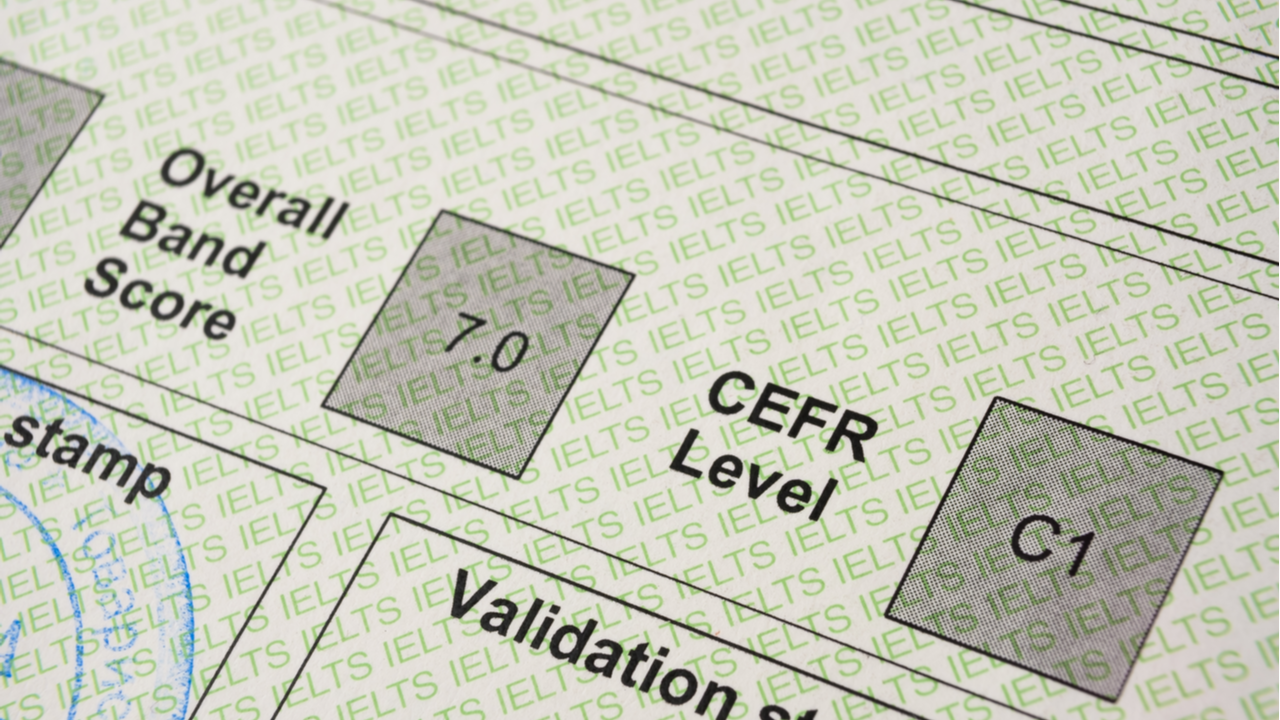
CEFR Levels In IELTS: 2024 Guide to CEFR Levels For Language Proficiency Tests

IELTS Coaching Fees 2023: Duration, Fees Guide & Benefits
Love this blog share the love, boost your ielts writing score.
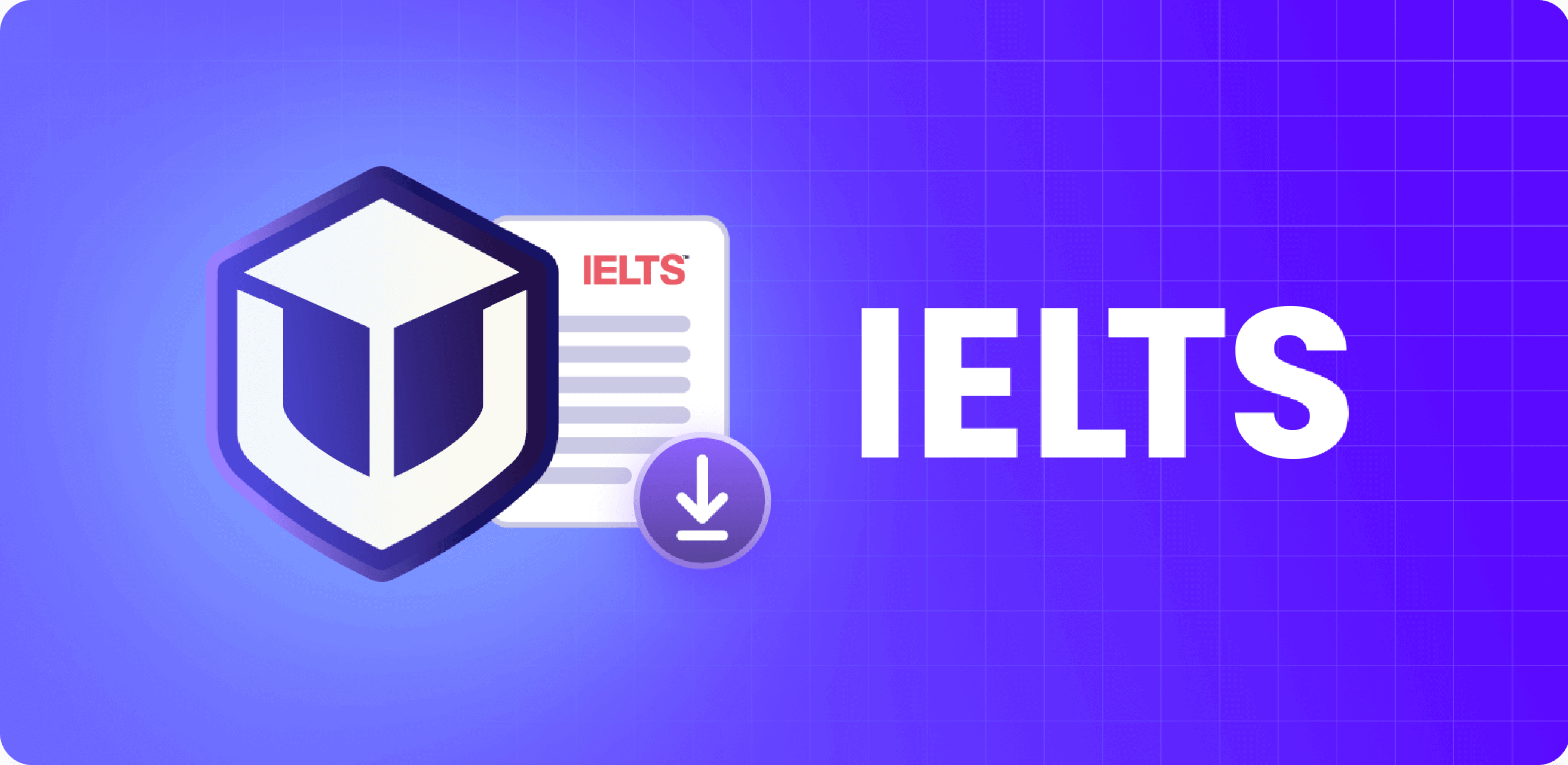
Learn how to prepare for IELTS
- 2L+ Leap students sent abroad
- 2L+ students scored 7+ bands
Have Questions? Get Guidance to reach your Dream University
Connect with India's finest counsellors and biggest study abroad community.
Related Blogs

MPH in New Zealand for International Students
- August 9, 2024
- 16 min read

MIM in France for International Students

LLM In Singapore for International Students
- 18 min read

LLM in Netherlands for International Students

MA in Spain for International Students

MA in Sweden for International Students
- 14 min read
Popular Blogs

Fall/September Intake in UK 2024-2025: Timeline & Universities
- May 15, 2023

Oxford vs Harvard University: Which is better for Study abroad?
- August 6, 2024
- 14 Min Read

Masters in Mechanical Engineering in Germany for International Students
- August 8, 2024
- 16 Min Read

Highest Paying Jobs in Dubai for Indian Students: Salary & Requirements
- August 5, 2024
- 21 Min Read

Masters in Biotechnology in Germany for International Students

Masters in Psychology in Germany for International Students
- 15 Min Read
Crack IELTS with
7+ bands in 4 weeks.
Get Guidance to reach your
Dream university.

IMAGES
COMMENTS
Step 1: Return to your thesis. To begin your conclusion, signal that the essay is coming to an end by returning to your overall argument. Don't just repeat your thesis statement —instead, try to rephrase your argument in a way that shows how it has been developed since the introduction. Example: Returning to the thesis.
Let's go through each step. 1. Understand the Purpose. The conclusion is your final opportunity to leave an impact. It should tie together your main ideas, reinforce your message, and give the reader a sense of closure. Wrap Up Your Main Ideas. The conclusion should succinctly wrap up the main points of your writing.
Finally, some advice on how not to end an essay: Don't simply summarize your essay. A brief summary of your argument may be useful, especially if your essay is long--more than ten pages or so. But shorter essays tend not to require a restatement of your main ideas. Avoid phrases like "in conclusion," "to conclude," "in summary," and "to sum up ...
Highlight the "so what". At the beginning of your paper, you explain to your readers what's at stake—why they should care about the argument you're making. In your conclusion, you can bring readers back to those stakes by reminding them why your argument is important in the first place. You can also draft a few sentences that put ...
Also read: How to Write a Thesis Statement. 2. Tying together the main points. Tying together all the main points of your essay does not mean simply summarizing them in an arbitrary manner. The key is to link each of your main essay points in a coherent structure. One point should follow the other in a logical format.
In this video, you'll learn how to write a strong essay conclusion paragraph that ties together the essay's main points, shows why your argument matters, and...
To write a conclusion for an essay, restate the main points or arguments you've made in the body paragraphs. Summarize the key findings or insights you've discussed and emphasize their significance. Avoid introducing new information in the conclusion; instead, focus on reinforcing your main points and leaving a lasting impression on the reader. ...
The conclusion allows you to have the final say on the issues you have raised in your paper, to synthesize your thoughts, to demonstrate the importance of your ideas, and to propel your reader to a new view of the subject. It is also your opportunity to make a good final impression and to end on a positive note.
1. Return to Your Thesis. Similar to how an introduction should capture your reader's interest and present your argument, a conclusion should show why your argument matters and leave the reader with further curiosity about the topic. To do this, you should begin by reminding the reader of your thesis statement.
End your essay with a call to action, warning, or image to make your argument meaningful. Keep your conclusion concise and to the point, so you don't lose a reader's attention. Do your best to avoid adding new information to your conclusion and only emphasize points you've already made in your essay. Method 1.
Step 3: Form a Personal Connection With the Reader. The final step when writing a conclusion paragraph is to include a small detail about yourself. This information will help you build a more intimate bond with your reader and help them remember you better.
How to write a conclusion. An effective conclusion is created by following these steps: 1. Restate the thesis. An effective conclusion brings the reader back to the main point, reminding the reader of the purpose of the essay. However, avoid repeating the thesis verbatim. Paraphrase your argument slightly while still preserving the primary point.
When wondering how to write a conclusion, it boils down to this: Conclusions should round off the topic and leave a strong impression in the readers' minds. ... For the most part, if you know how to write a conclusion for an essay, you know how to write conclusions period. You won't find too much variation between an essay and other papers ...
A change of style i.e. being more emotional or sentimental than the rest of the essay. Keep it straightforward, explanatory and clear. Overused phrases like: "in conclusion"; "in summary"; "as shown in this essay". Consign these to the rubbish bin! Here are some alternatives, there are many more: The x main points presented here ...
A conclusion is an important part of the paper; it provides closure for the reader while reminding the reader of the contents and importance of the paper. It accomplishes this by stepping back from the specifics in order to view the bigger picture of the document. In other words, it is reminding the reader of the main argument.
It's better to leave it out of the paper than to include it in the conclusion. 5. Proofread and revise your conclusion before turning in your paper. Set aside your paper for at least a few hours. Then, re-read what you've written. Look for typos, misspelled words, incorrectly used words, and other errors.
The conclusion to an essay is the most purely rhetorical part of the entire piece. By "rhetorical", we mean a conclusion's (and indeed the entire essay's) ability to convince or persuade the reader of certain outlooks or arguments. An essay conclusion needs to use rhetoric to emotionally connect with the reader in some way. And this is ...
Part I: The Introduction. An introduction is usually the first paragraph of your academic essay. If you're writing a long essay, you might need 2 or 3 paragraphs to introduce your topic to your reader. A good introduction does 2 things: Gets the reader's attention. You can get a reader's attention by telling a story, providing a statistic ...
The essay writing process consists of three main stages: Preparation: Decide on your topic, do your research, and create an essay outline. Writing: Set out your argument in the introduction, develop it with evidence in the main body, and wrap it up with a conclusion. Revision: Check your essay on the content, organization, grammar, spelling ...
Table of contents. Step 1: Restate the problem. Step 2: Sum up the paper. Step 3: Discuss the implications. Research paper conclusion examples. Frequently asked questions about research paper conclusions.
2. Organize your ideas: Before you start writing, outline the main points you want to cover in your essay. This will help you organize your thoughts and ensure a logical flow of ideas. 3. Use topic sentences: Begin each paragraph with a topic sentence that introduces the main idea of the paragraph.
Discover the art of crafting captivating essay conclusions that leave a lasting impact. Learn how to restate your thesis, summarize key points, evoke emotions, and offer recommendations. Explore examples and gain valuable insights in this comprehensive guide. Elevate your writing skills with 29+ Essay Conclusion Examples in PDF.
If it helps, leave a placeholder and start in the body of the essay, where the story truly takes off and you get to the things you most want to say. READ: 7 Deciding Factors in Law School Admissions
Your name and profession: Clearly state who you are and what you do.; A photo: Adding a photo humanizes your profile and makes it more relatable.; Your story: Share your background, journey, and what inspired you to pursue your path.; Your values and mission: Explain what drives you and what you aim to achieve.; Your skills and expertise: Highlight your key skills, qualifications, and ...
If your class is writing essays of 600 words or longer, ... Culminating project: A photo essay about community. For our Where We Are Photo Essay Contest, students can work alone or with others to ...
For literature reviews or other types of essays or response or reaction papers, you might describe how you used the tool in your introduction. In your text, provide the prompt you used and then any portion of the relevant text that was generated in response. ... researchers, and students learn, write, and work with new technologies. Reference ...
Since 1883, we have delivered The Queen's Commonwealth Essay Competition, the world's oldest international schools' writing competition. Today, we work to expand its reach, providing life-changing opportunities for young people around the world.
Harvard University 2024-25 Application Essay Question Explanations. The Requirements: Five essays of 100 words or fewer Supplemental Essay Type(s): Diversity, Activity, Oddball The following required five short answer questions invite you to reflect on and share how your life experiences and academic and extracurricular activities shaped you, how you will engage with others at Harvard, and ...
Essays Uplift in Annual Writing Center Contest. Written By: Judith Hansen. ... The Grand Prize winner is Sophia McLain, a senior rhetoric and writing major when she submitted her essay. Sophia wrote about how a chance meeting with a non-traditional student caused her to rethink her attitude about attending her hometown college.
Structure of Essay in Writing Task 2. The structure of the essay in writing task 2 is the base of your essay, and a clear idea of the structure will make it much easier for you to finish the essay on time. The structure of the essay can be broken down in the following way: First Paragraph ; Second Paragraph; Third Paragraph; Fourth Paragraph